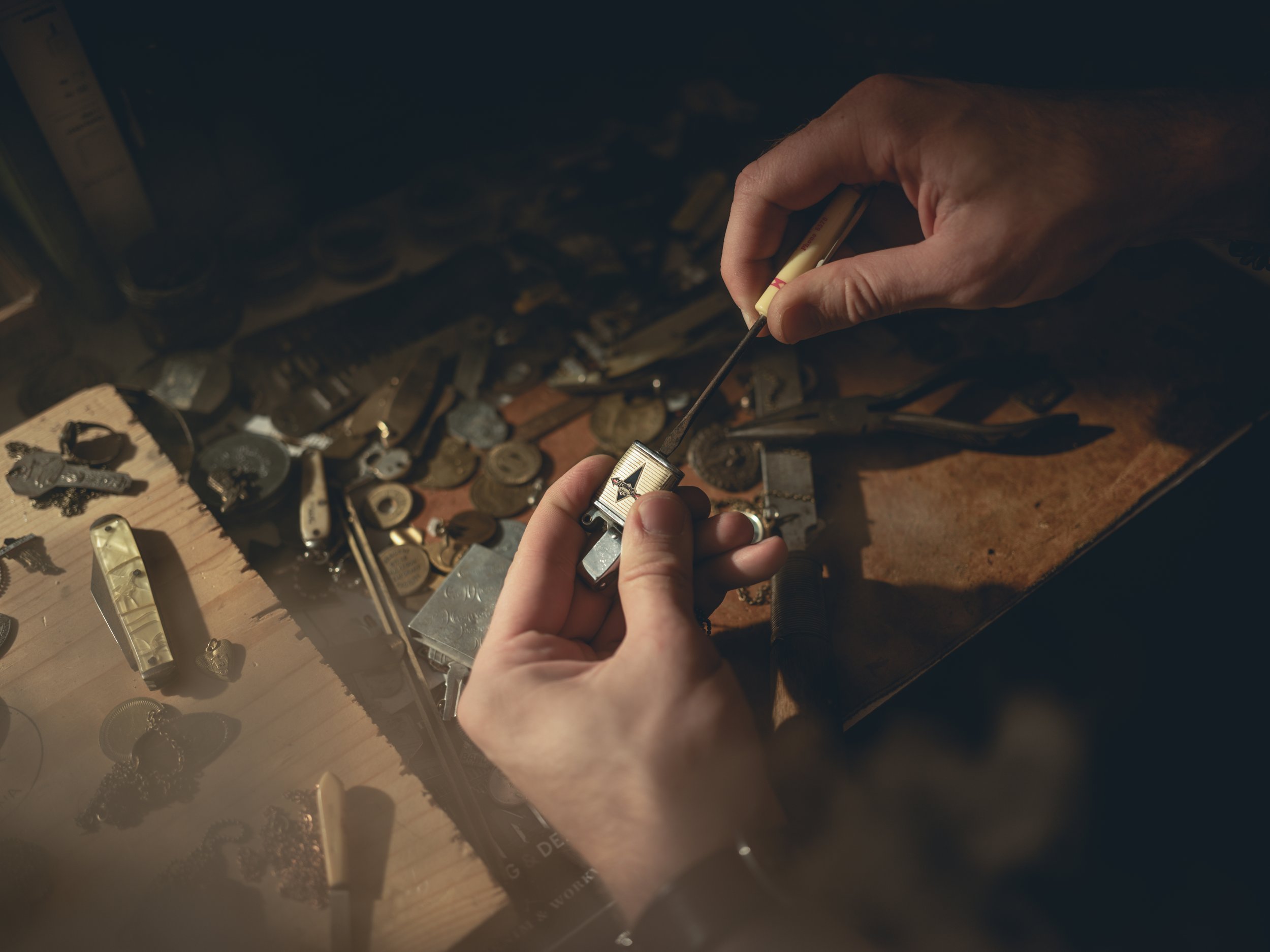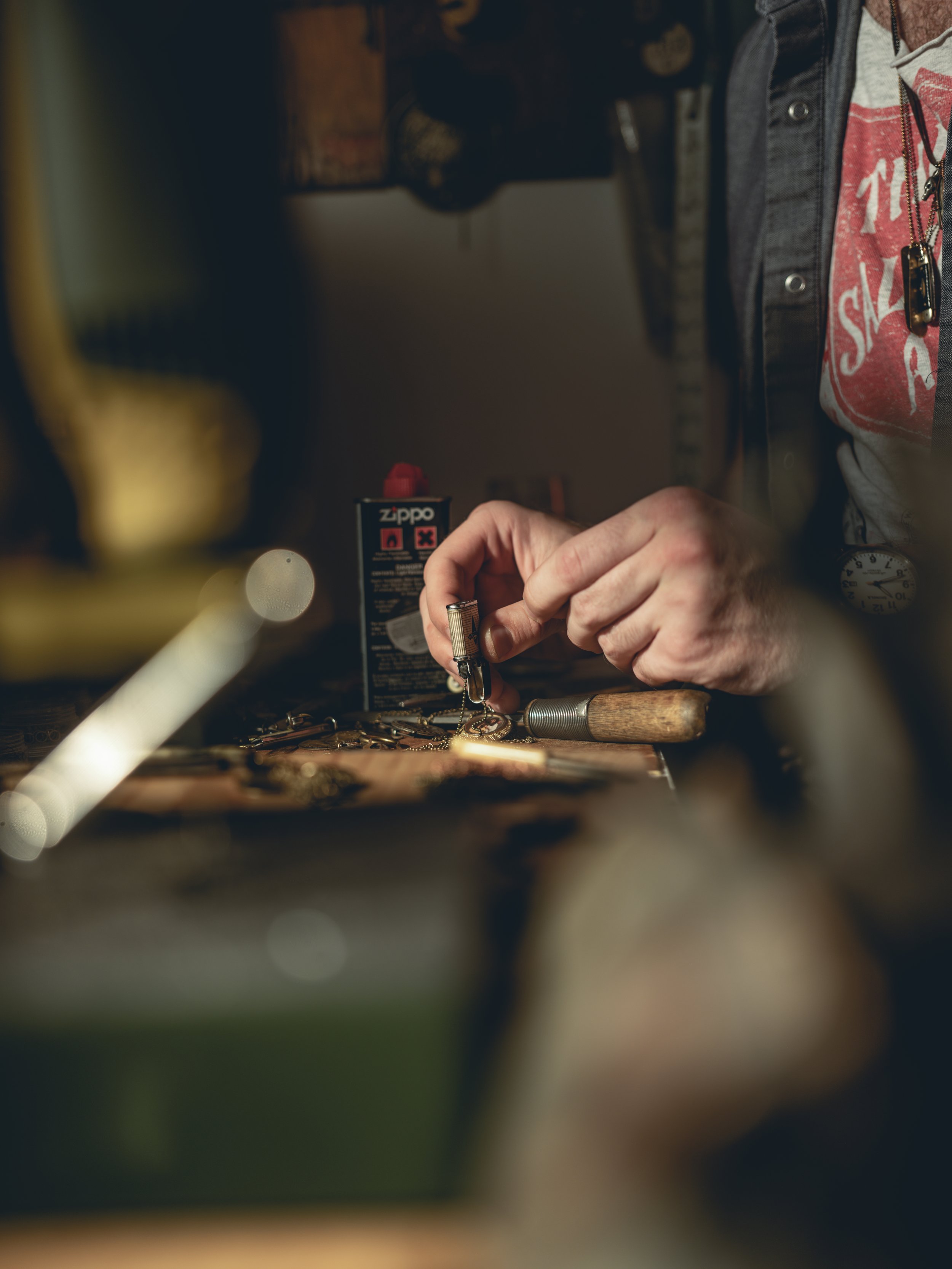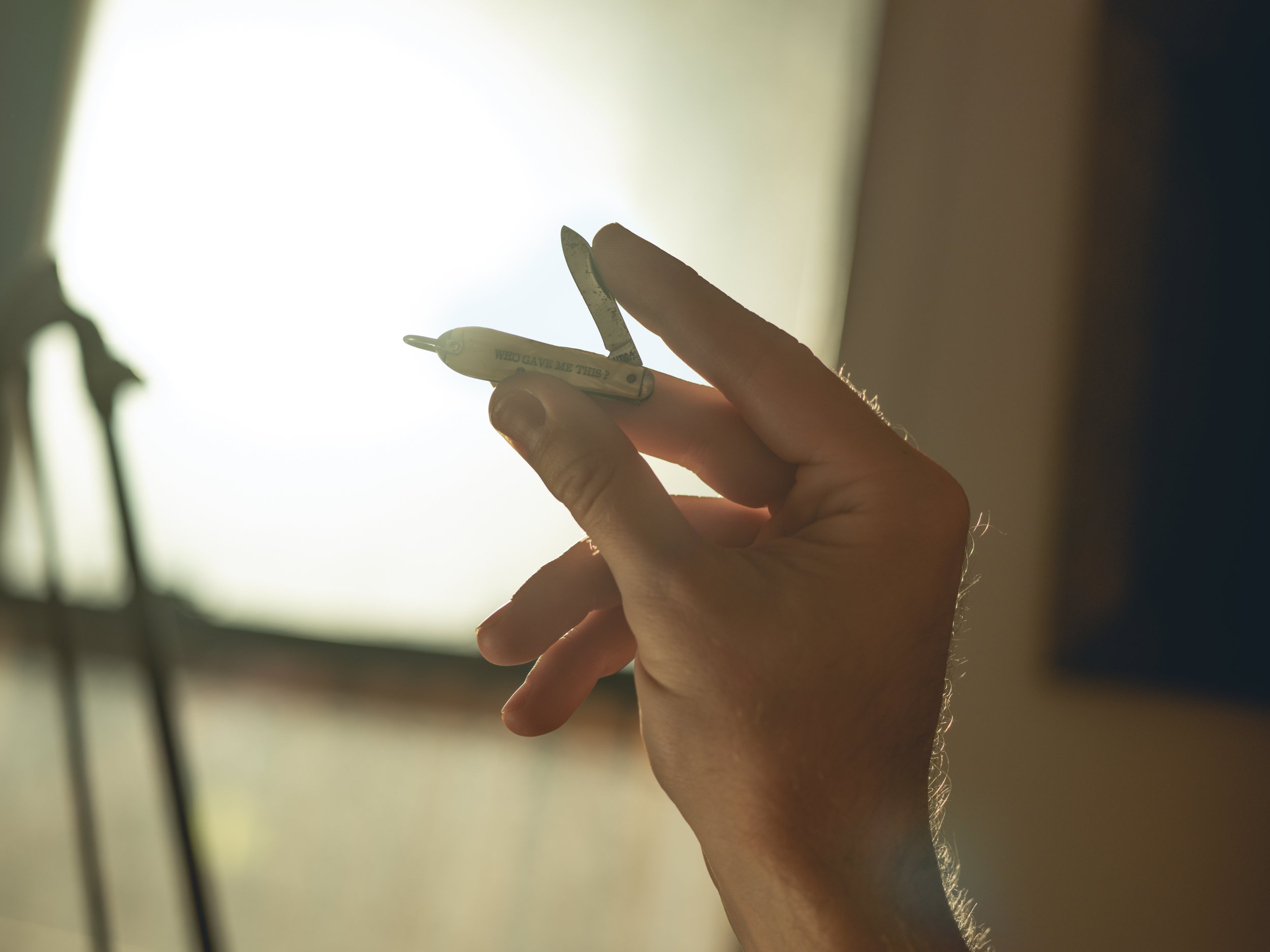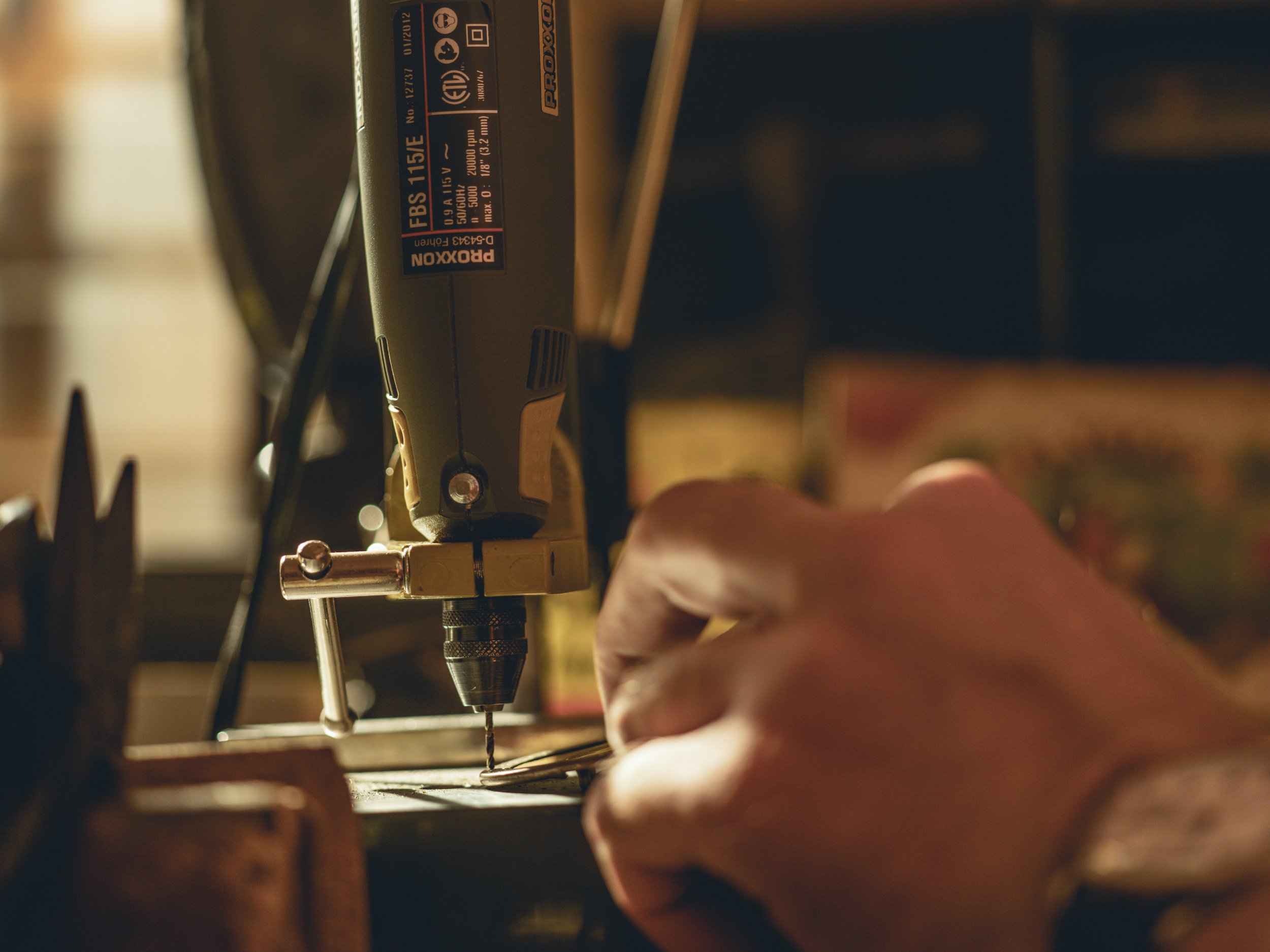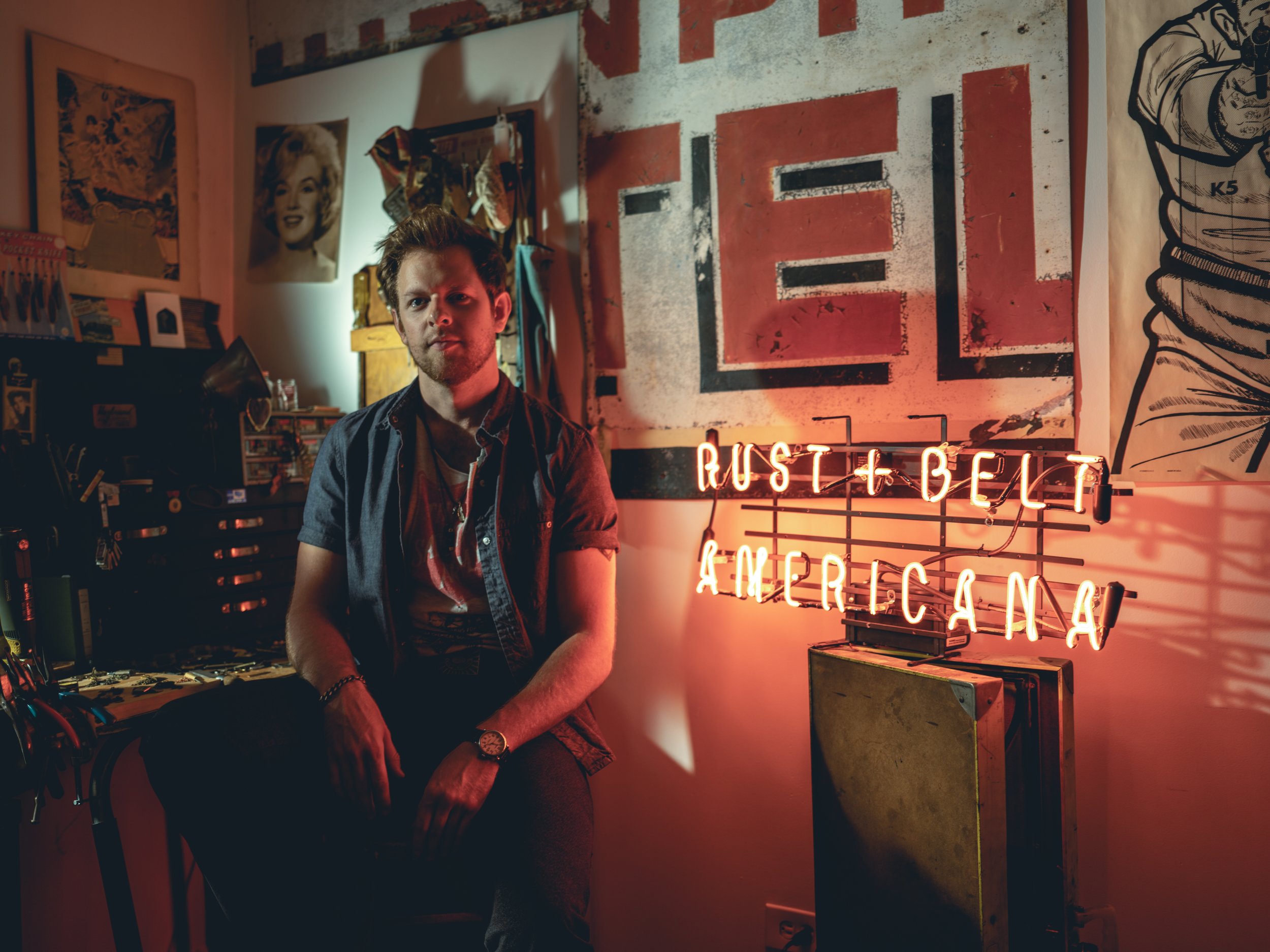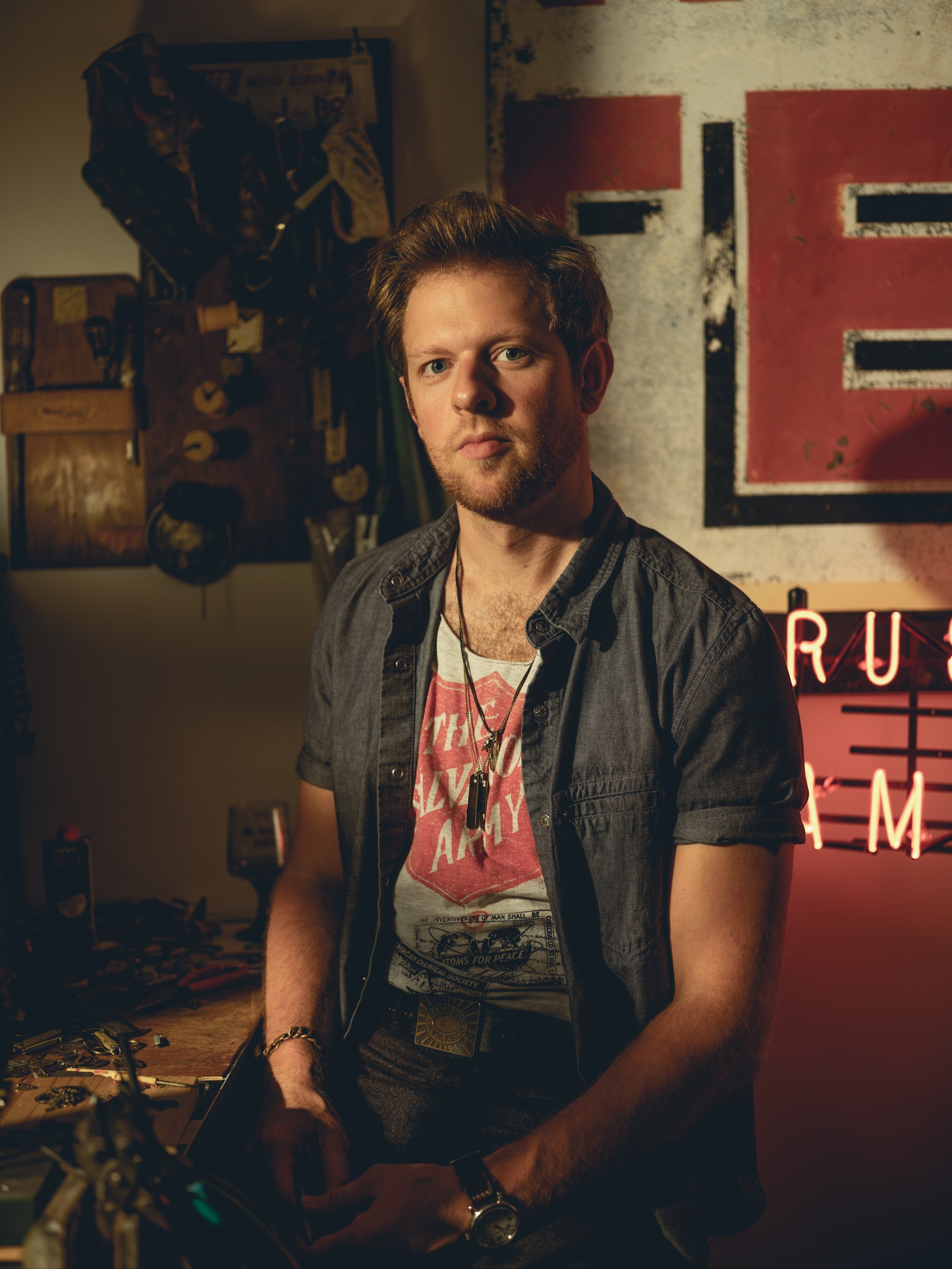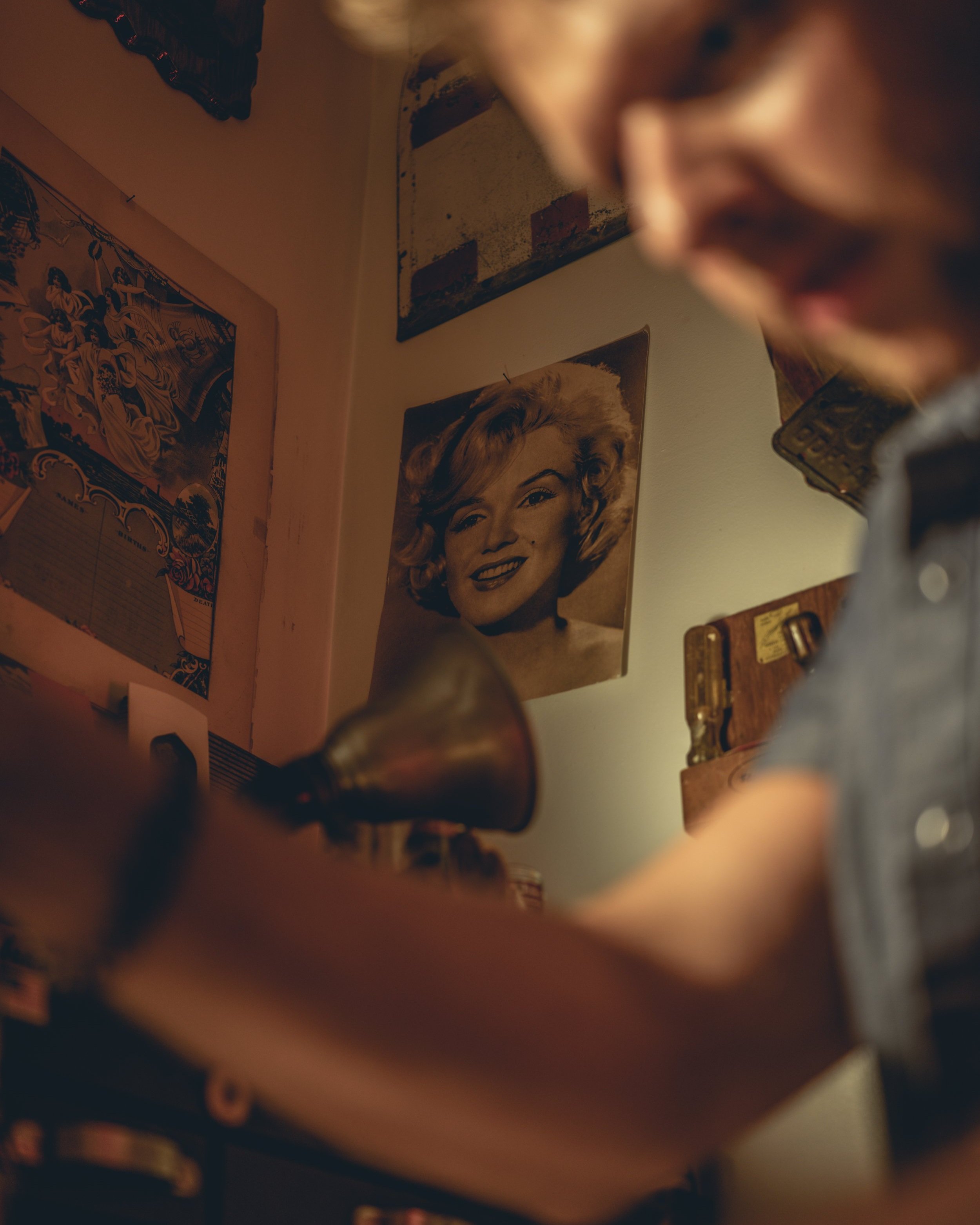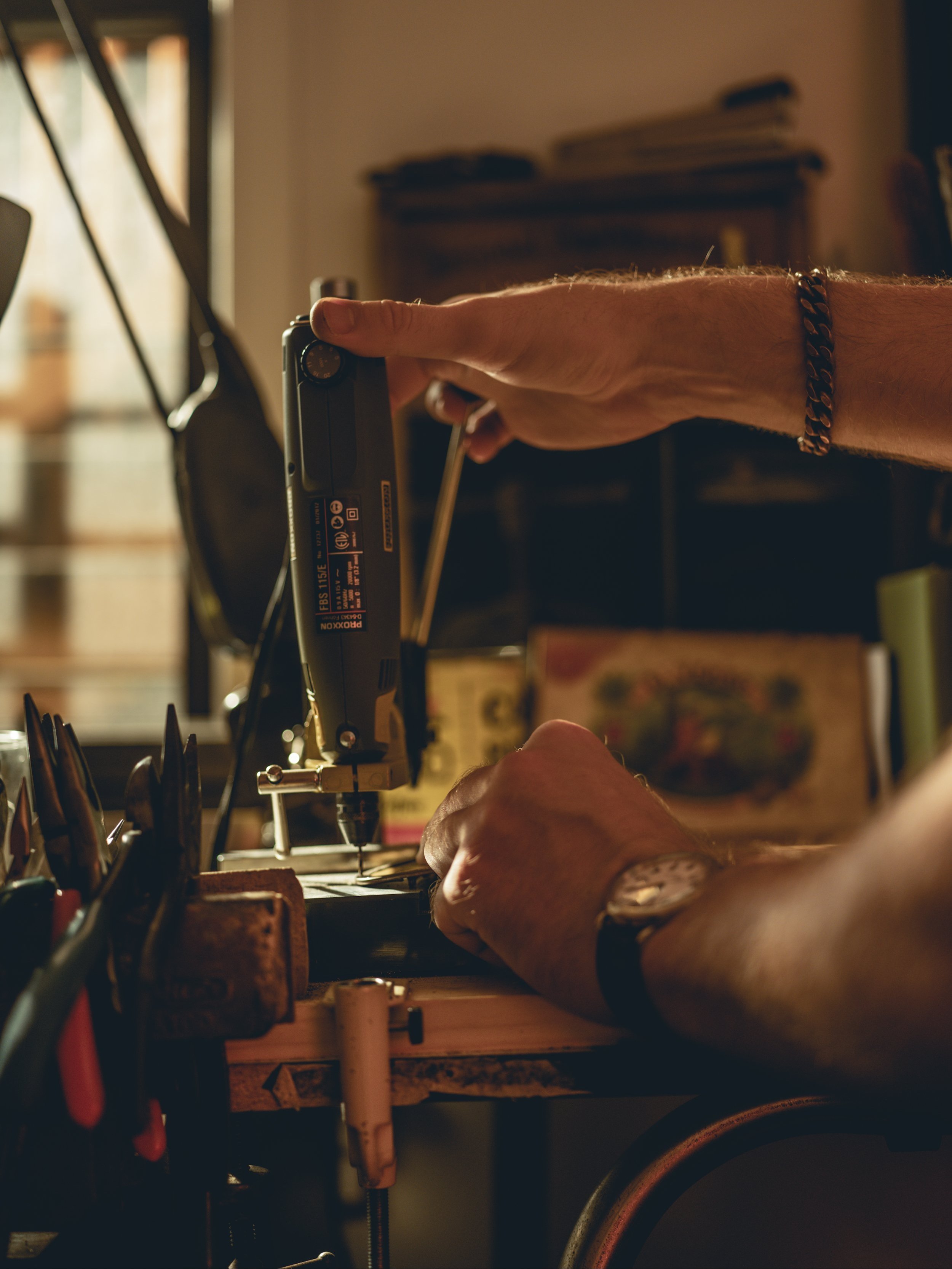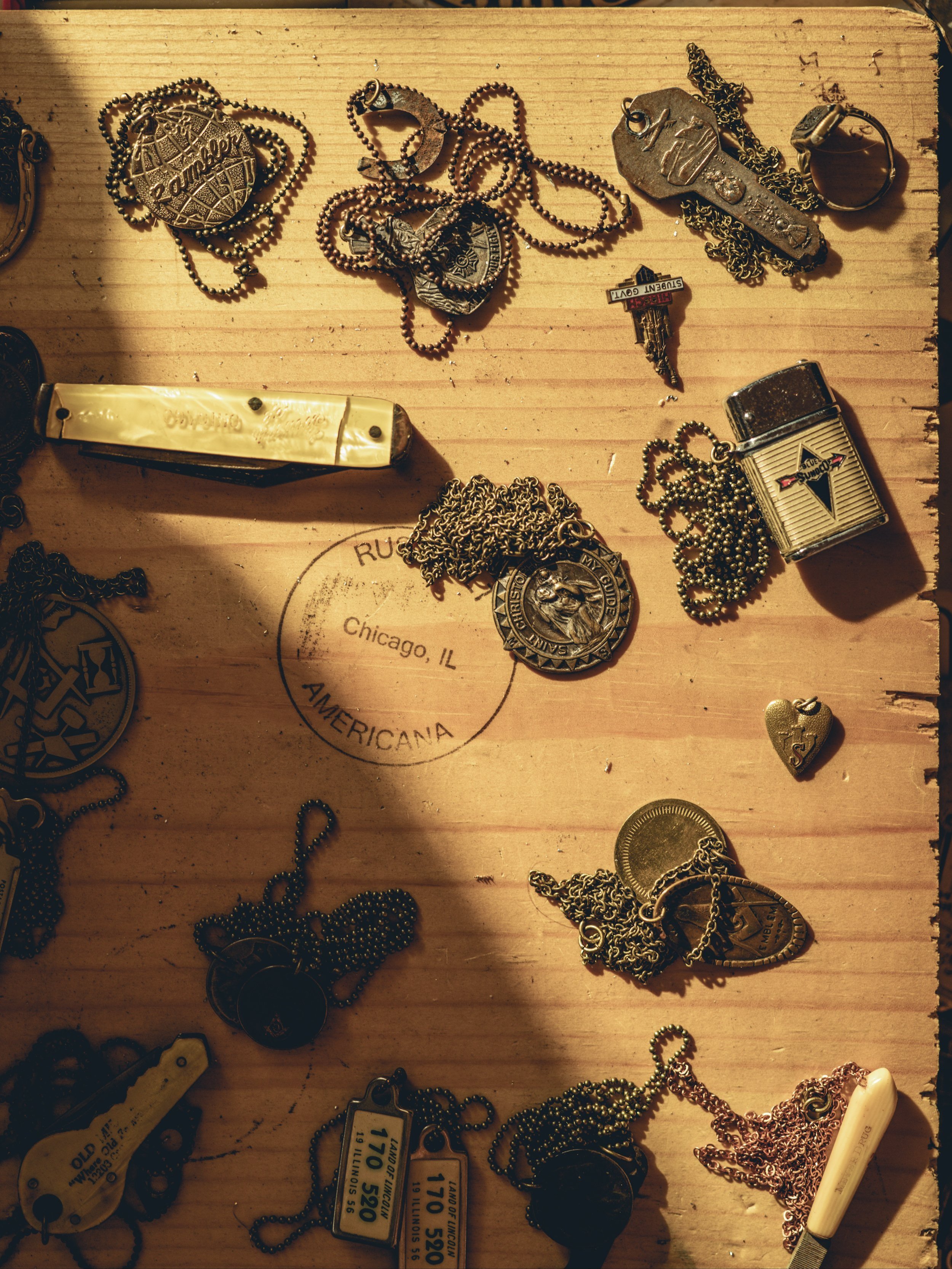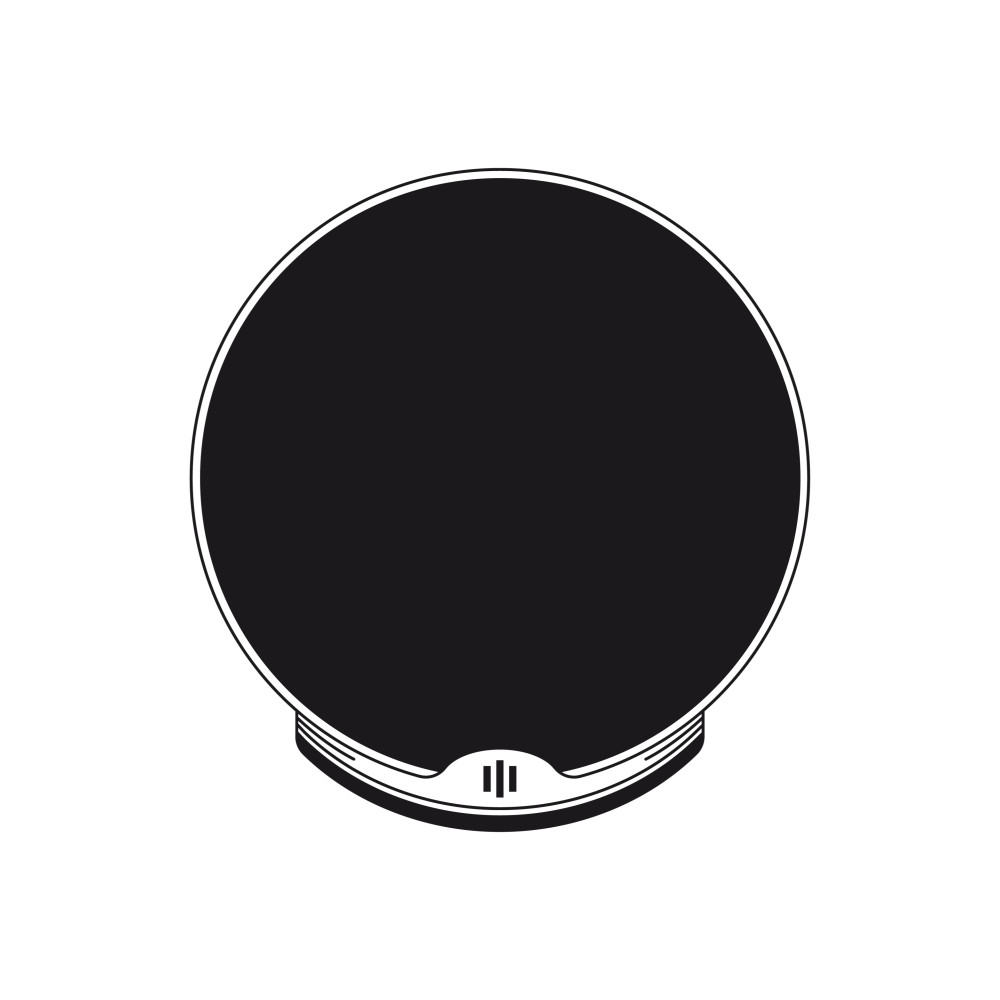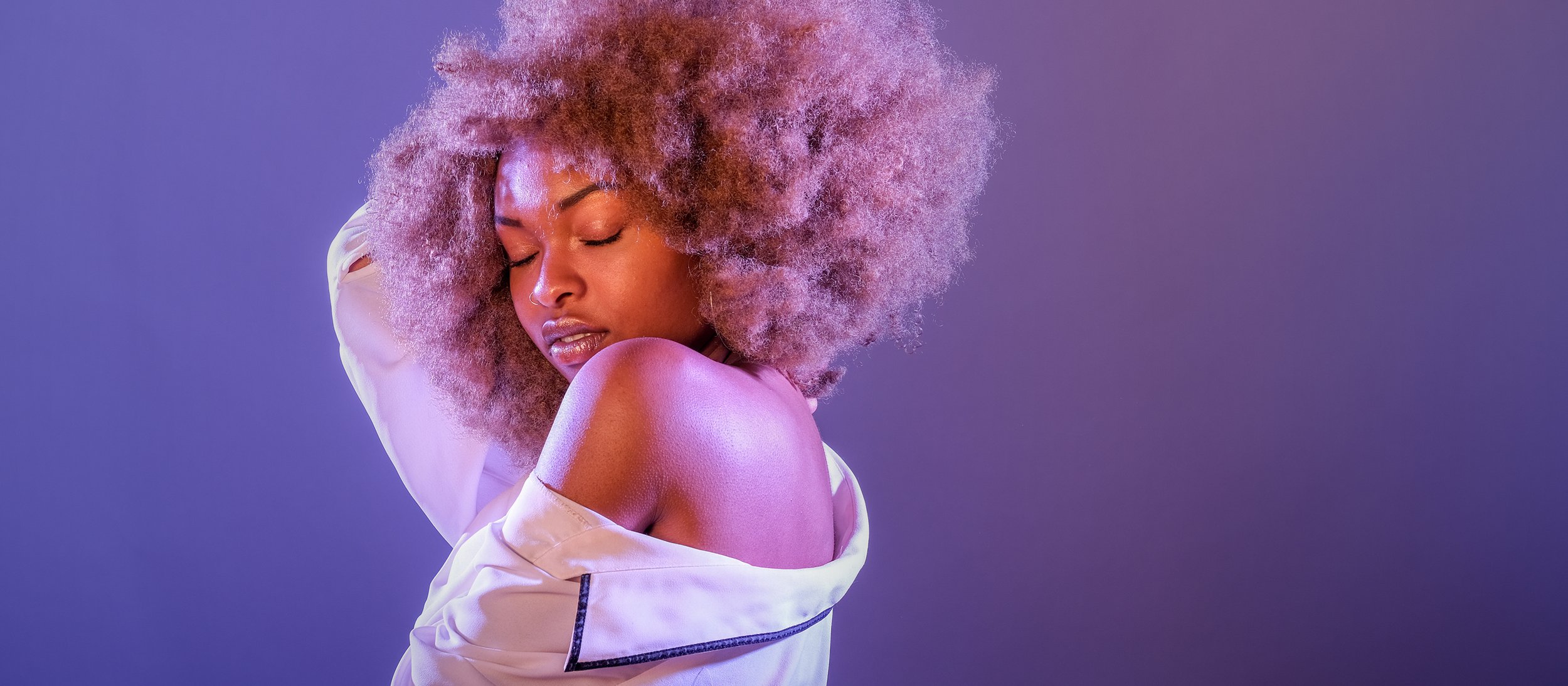
Broncolor
Photography, Stories & Ambassador
Images are worth a thousand words. As a Broncolor Ambassador I would work closely with the brand to tell compelling visual stories that not only highlighted their products but also showcased how they empower creatives to tell stories.

HVRNT
I rolled in my Siros 800L Kit and entered a dimly lit back room where Zak was standing. He was preparing all his tools for the amazing prints he does at HVRNT (hvrnt.com).
As Zak started pulling out clear sheets of black paper I began setting up a light stand and a soft box. I placed a single Siros 800 L light close to Zak. I placed the light, knowing that I wanted to get closer rather than farther to Zak as he worked. With a single light set up, I did some test shots, gave a nod to Zak and he began his process.
As he was laying out all his tools, Zak told me that his process start with a chainsaw - *badass*. He cuts out a section of a tree stump, then smooths out the cut with a power planner and orbital sander. The reason he does this is because the stump needs to be smooth and flat, any ridges make the printing more difficult. Good to know how this all starts.
Zak raised a blowtorch, lit a match and started burning into the stump. He began charring the print area. I had to turn my shutter speed down and adjust my moonlight accordingly so I could capture the flames of the torch in my photos. The stump got smokey as the pulp and materials between the stump’s rings burns away - this helps gives better definition to the print.
For a few minutes, as the stump cooled off and smoke was rising, I quickly shifted the light behind the stump so I could backlight the smoke. I kept adjusting the light until I got the perfect balance between the detail I wanted and the contrast of this dramatic lighting setup.
Once the stump had cooled off, it was time to get really close. I punched my light in, switched up a lens and made sure my trigger was ready. Zak returned with a tub of white ink and began scooping blobs onto some plexi, the beautiful white ink shone bright as the light hit it. As Zak began inking the stump, the light aligned perfectly, the stark contrast of black and white punched out all the details I was hoping for in my images.
Zak pulled a sheet of paper out of the stack and very graciously lay it down on the stump. Sandwiching the ink between the stump and the sheet, Zak held down on the page and began moving his had around on the sheet making sure that the ink grabs the paper in all the right places. While Zak was getting his elbows into it, I kept capturing images of the process. He would sneak a peek but raising sides of the paper to see the result, he kept at it until he felt confident that the print was done. After one last press, Zak raised the paper and the print was slowly, beautifully revealed as it peeled off of the stump.
The print perfectly reflected the rings of the stump as Zak held it up - I asked him to take a small step back, so he was at the perfect angle for my light, as he lowered the print slightly, I took one last photo.
It was amazing capturing Zak’s process, seeing something tangible and capturing the details that bring art to life always brings a tender moment to my soul.



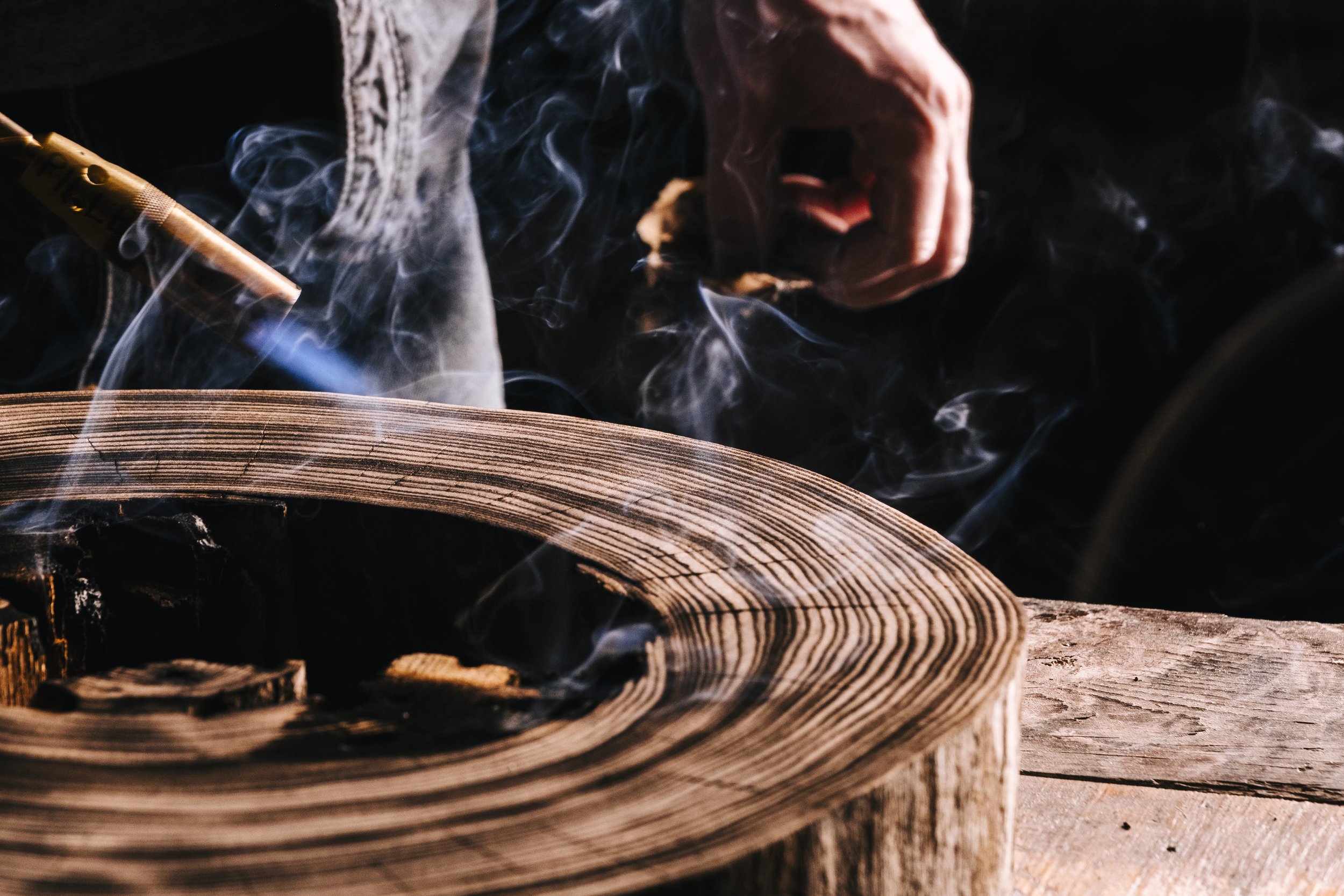
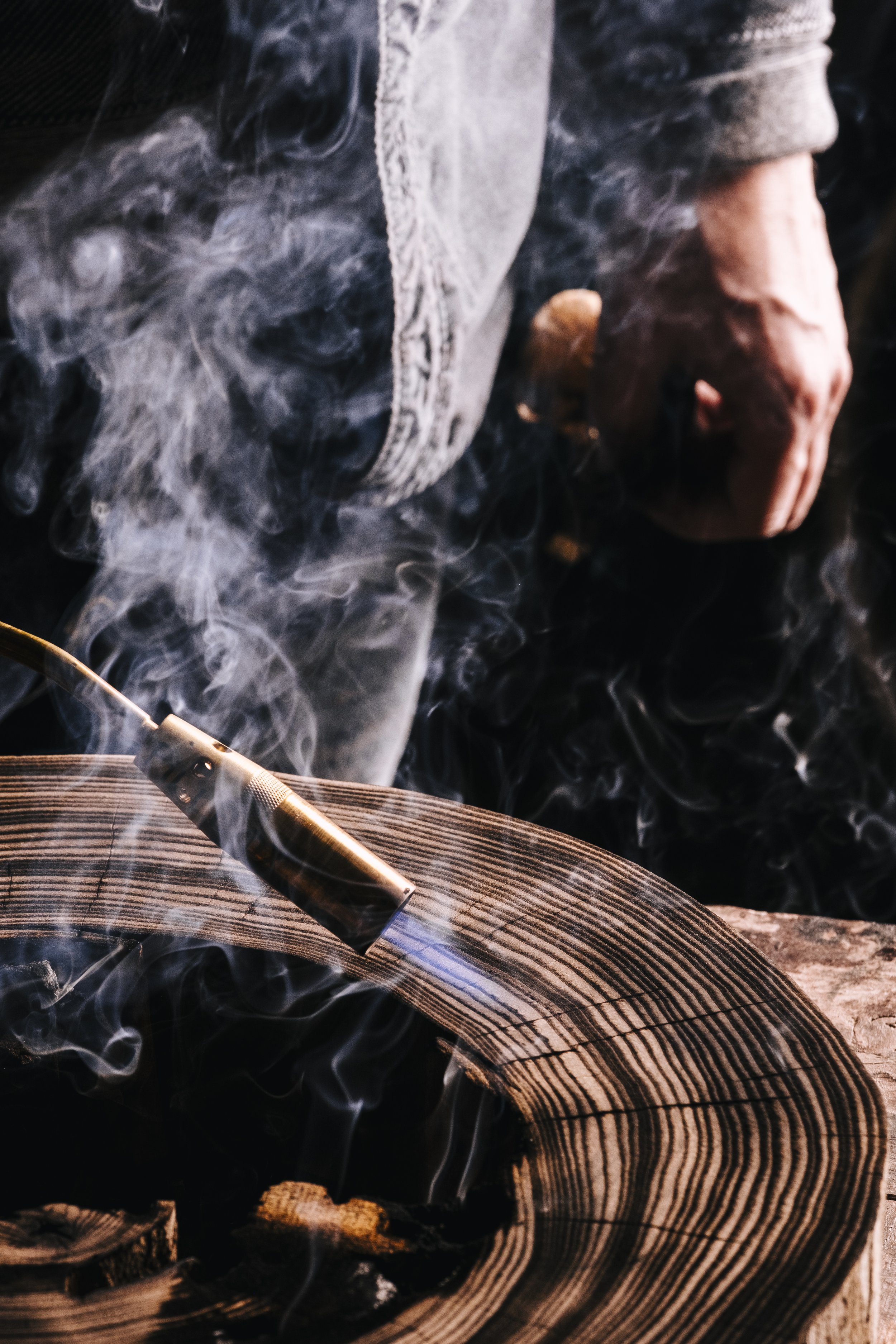
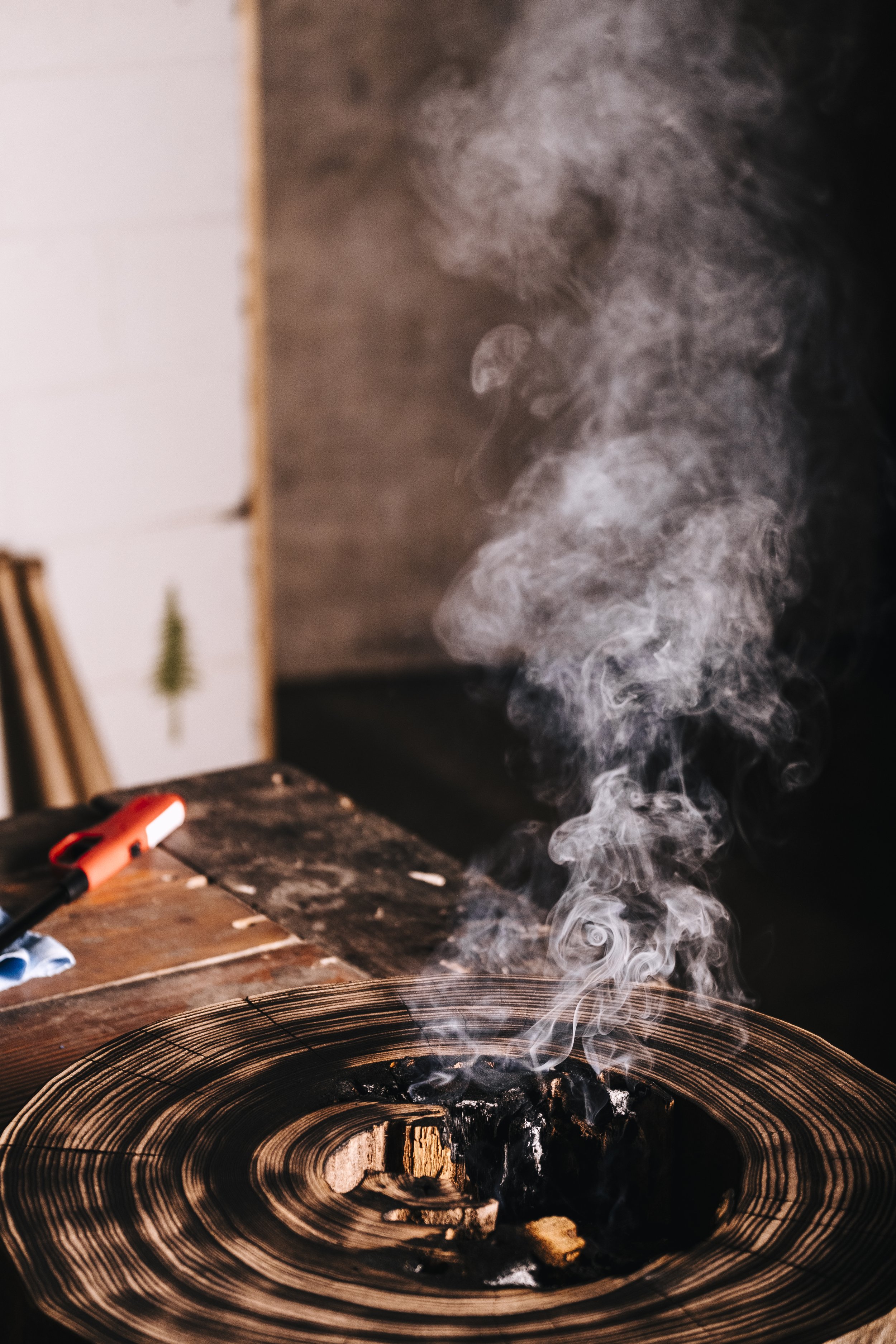
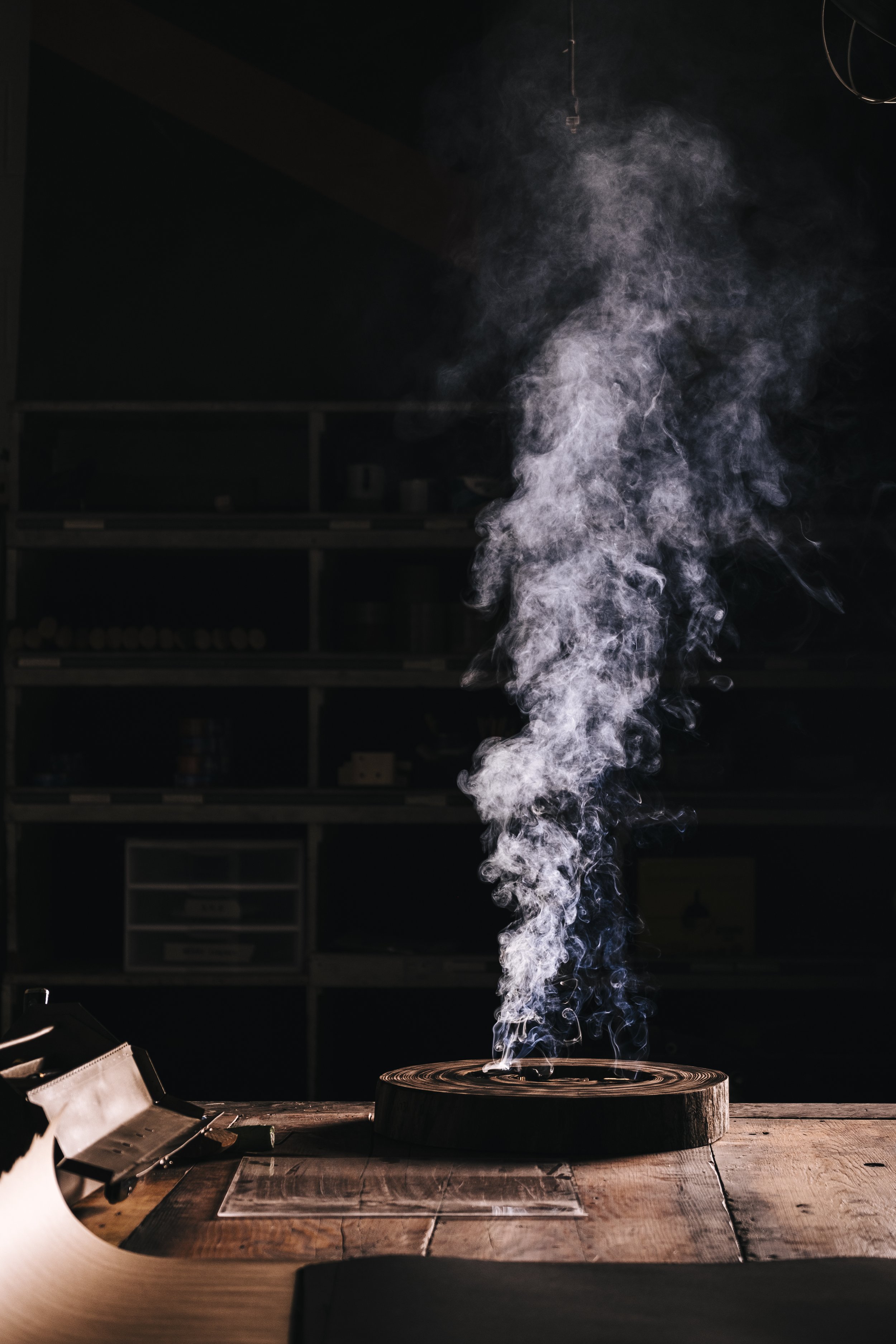
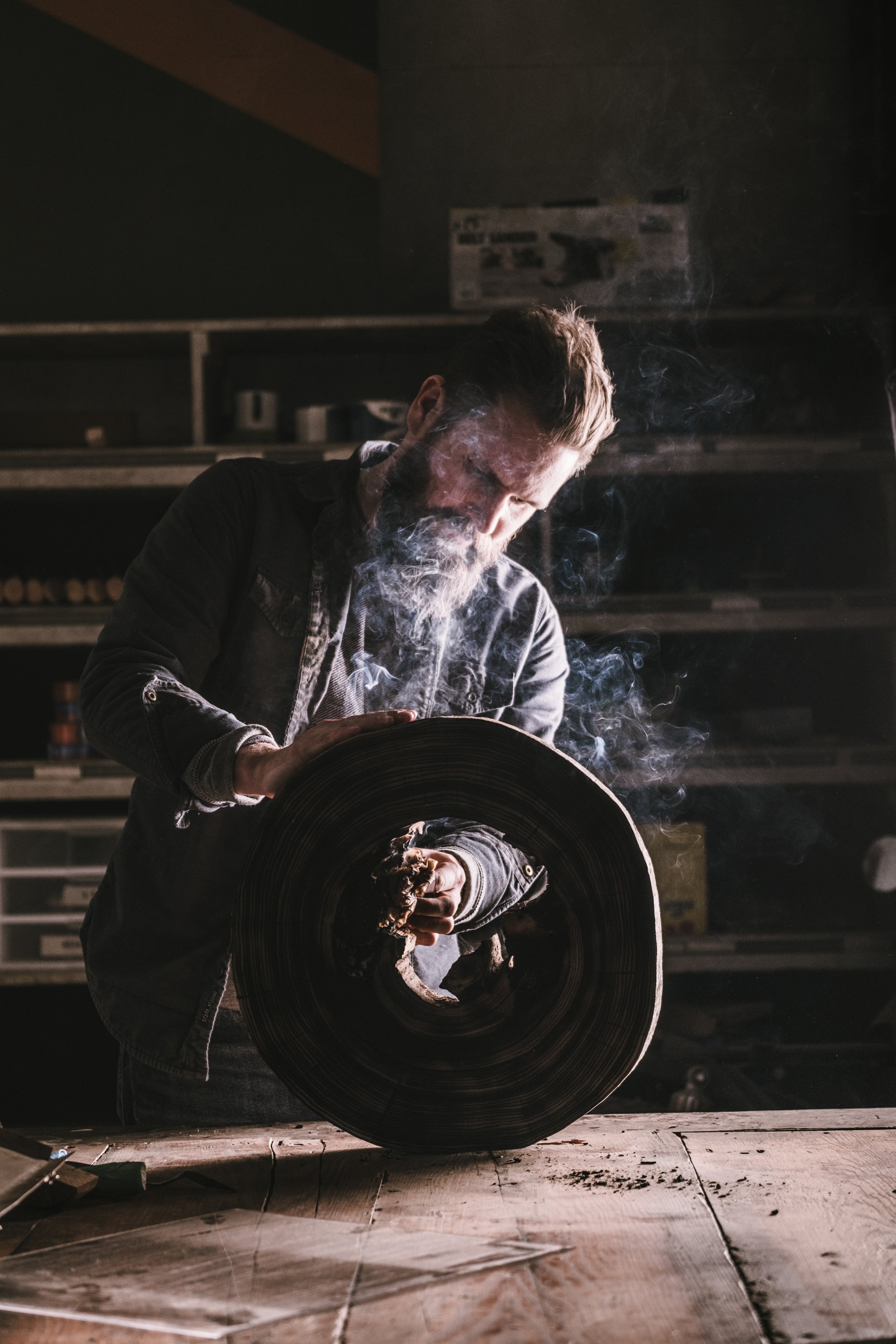
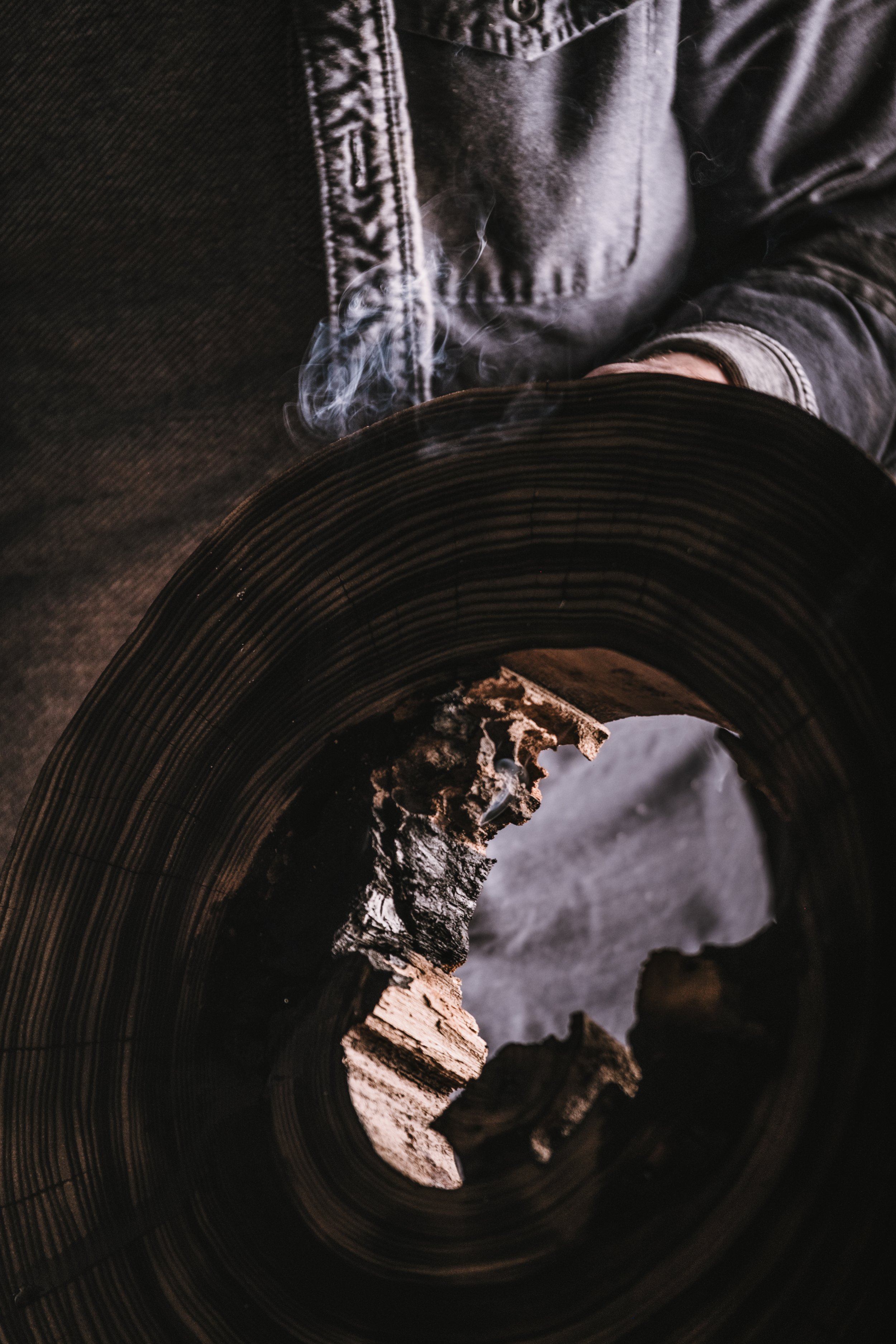
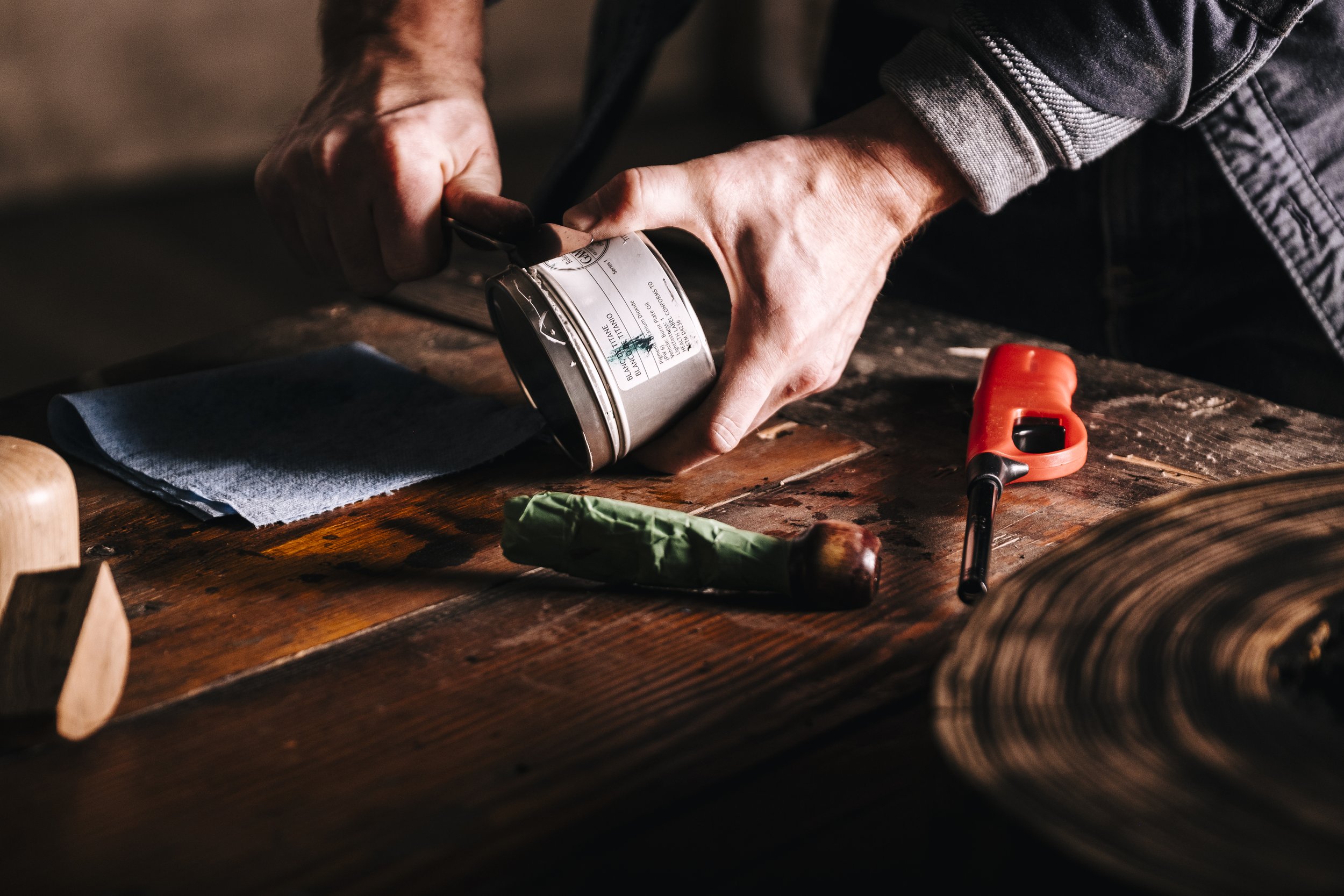


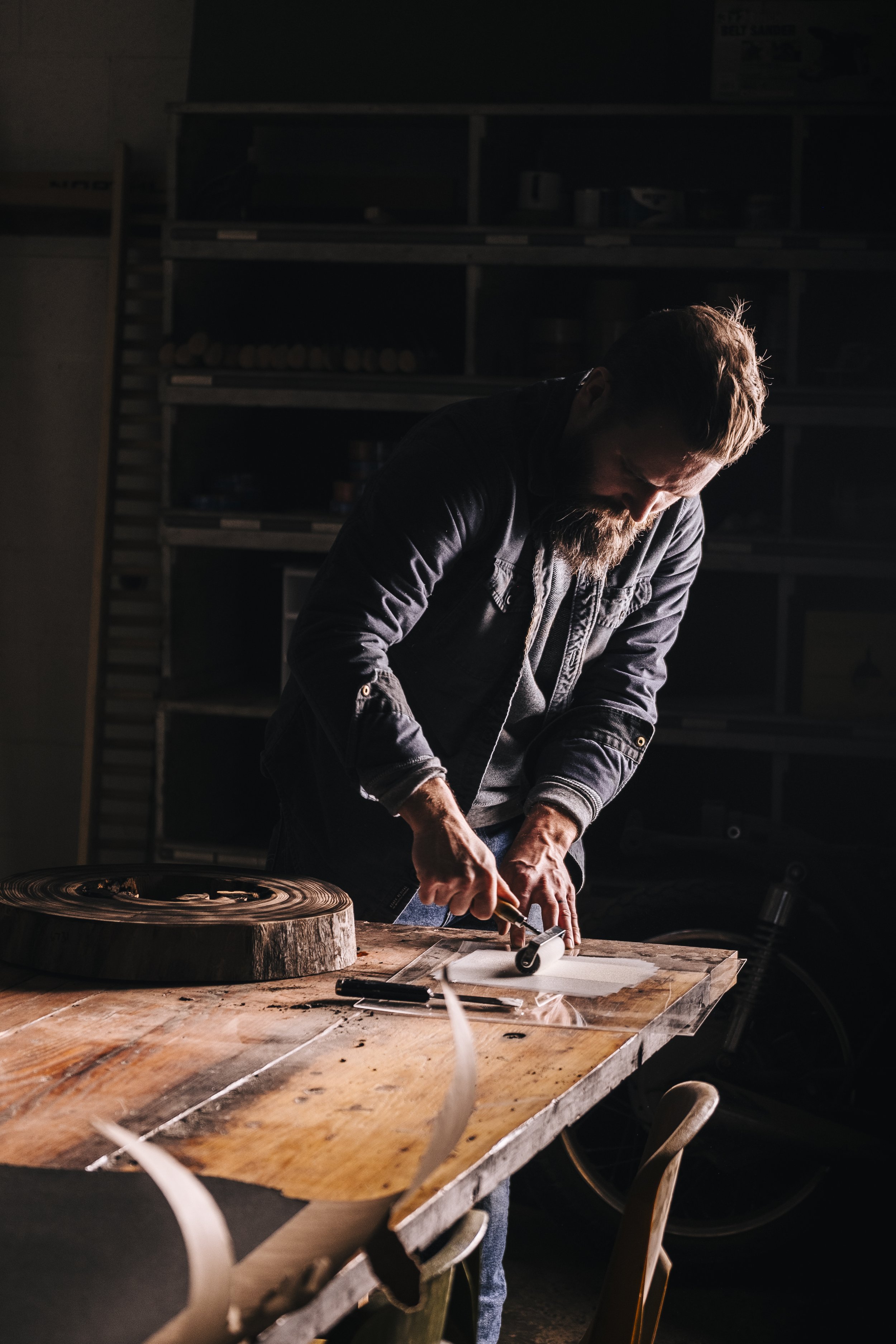
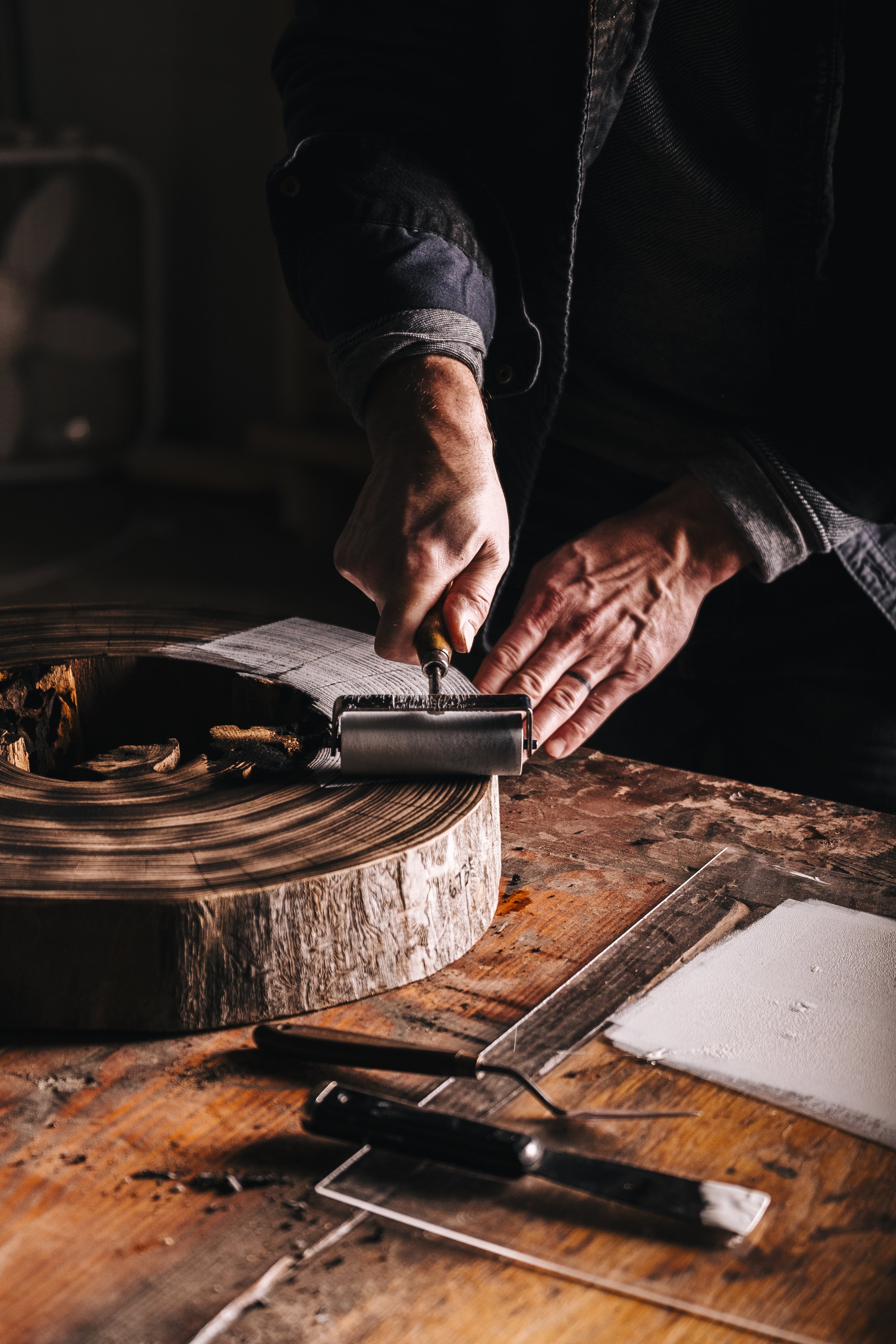
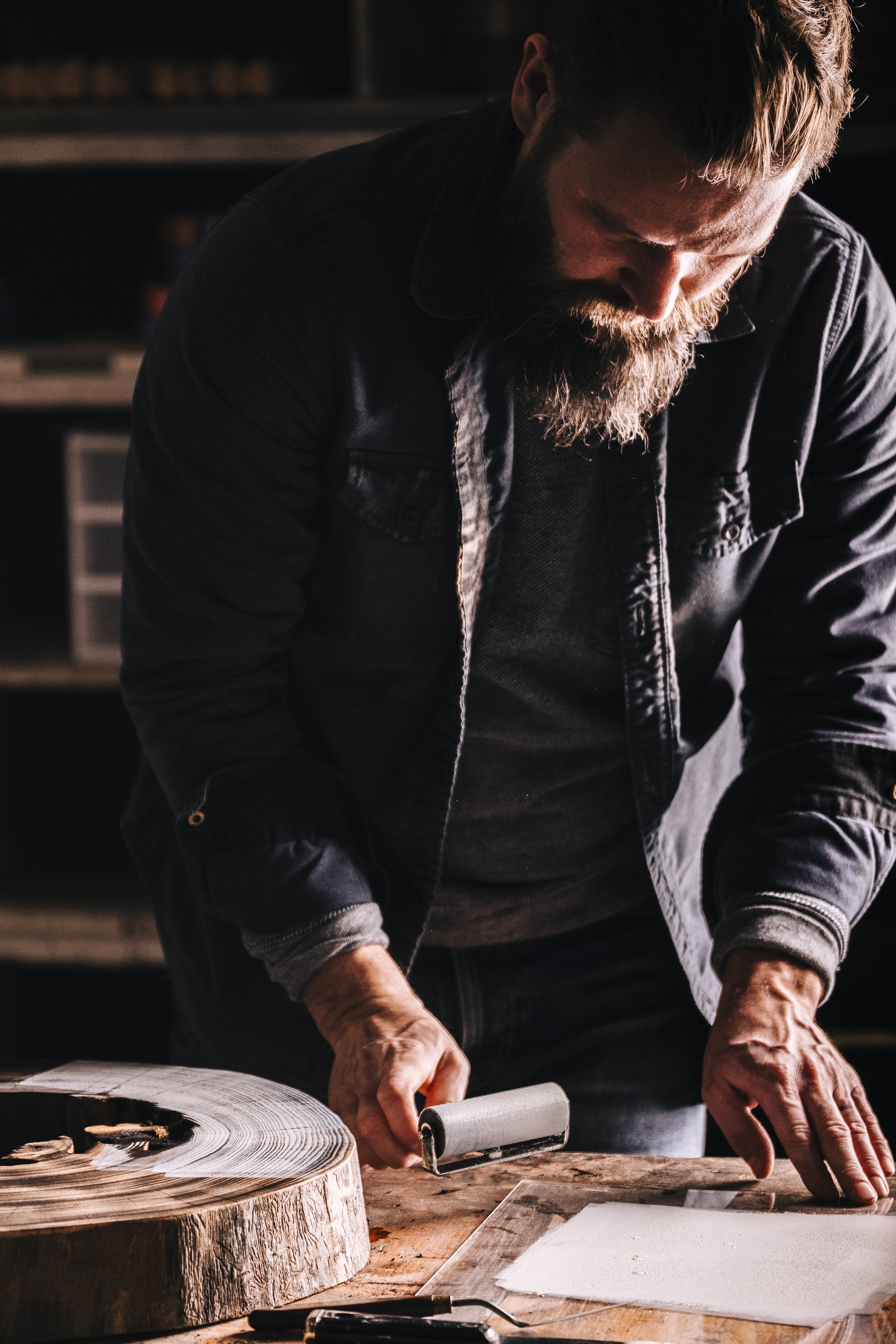
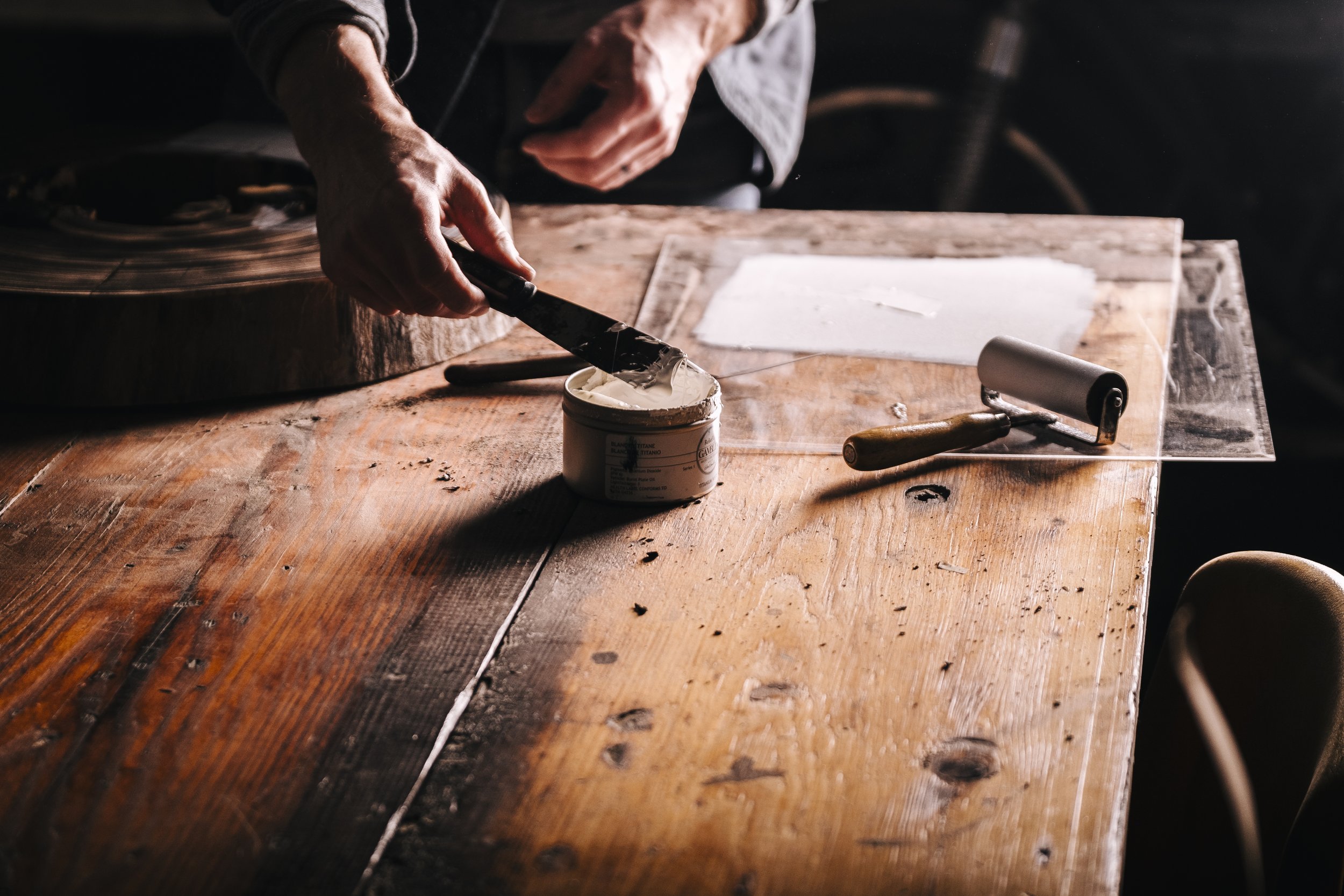
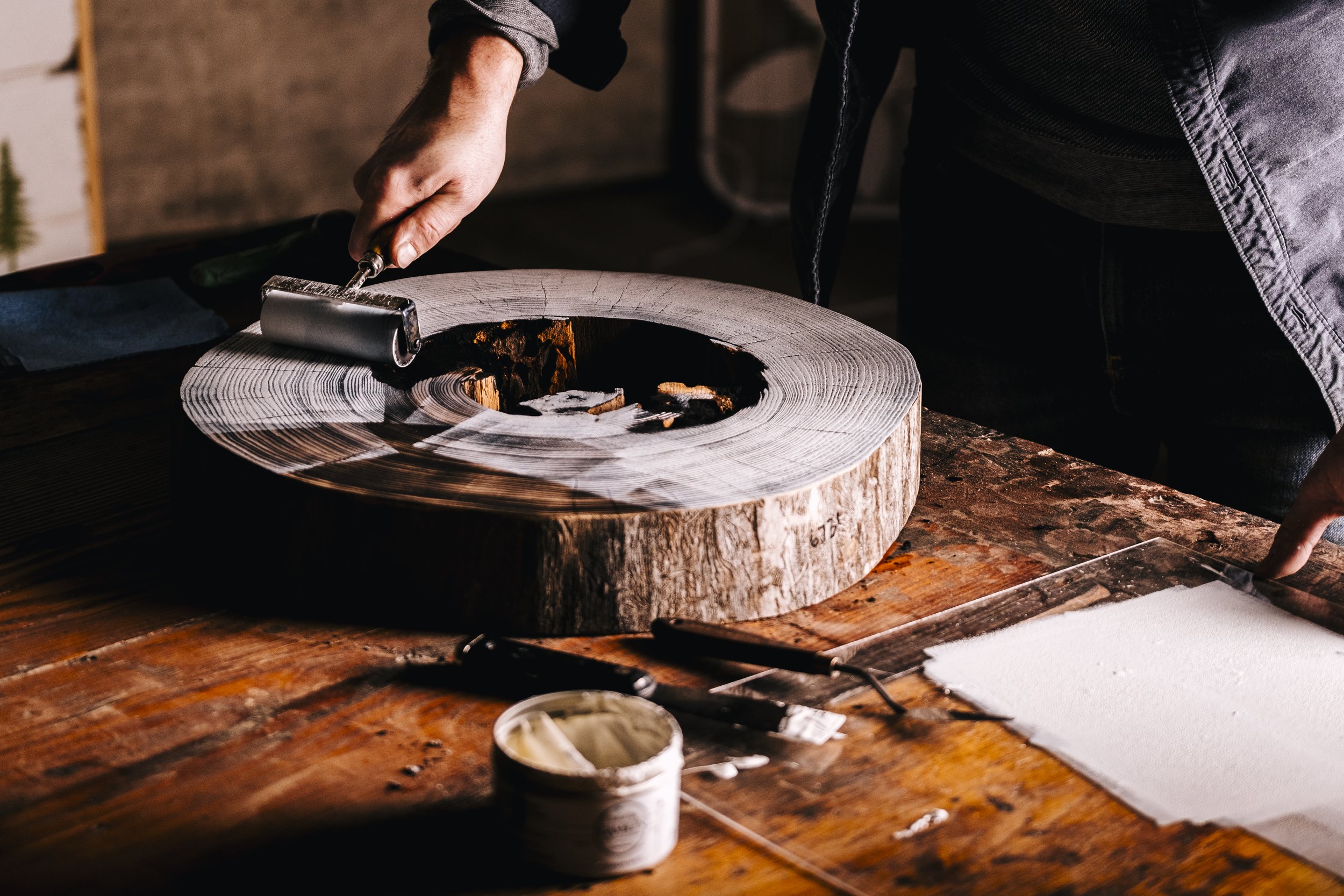
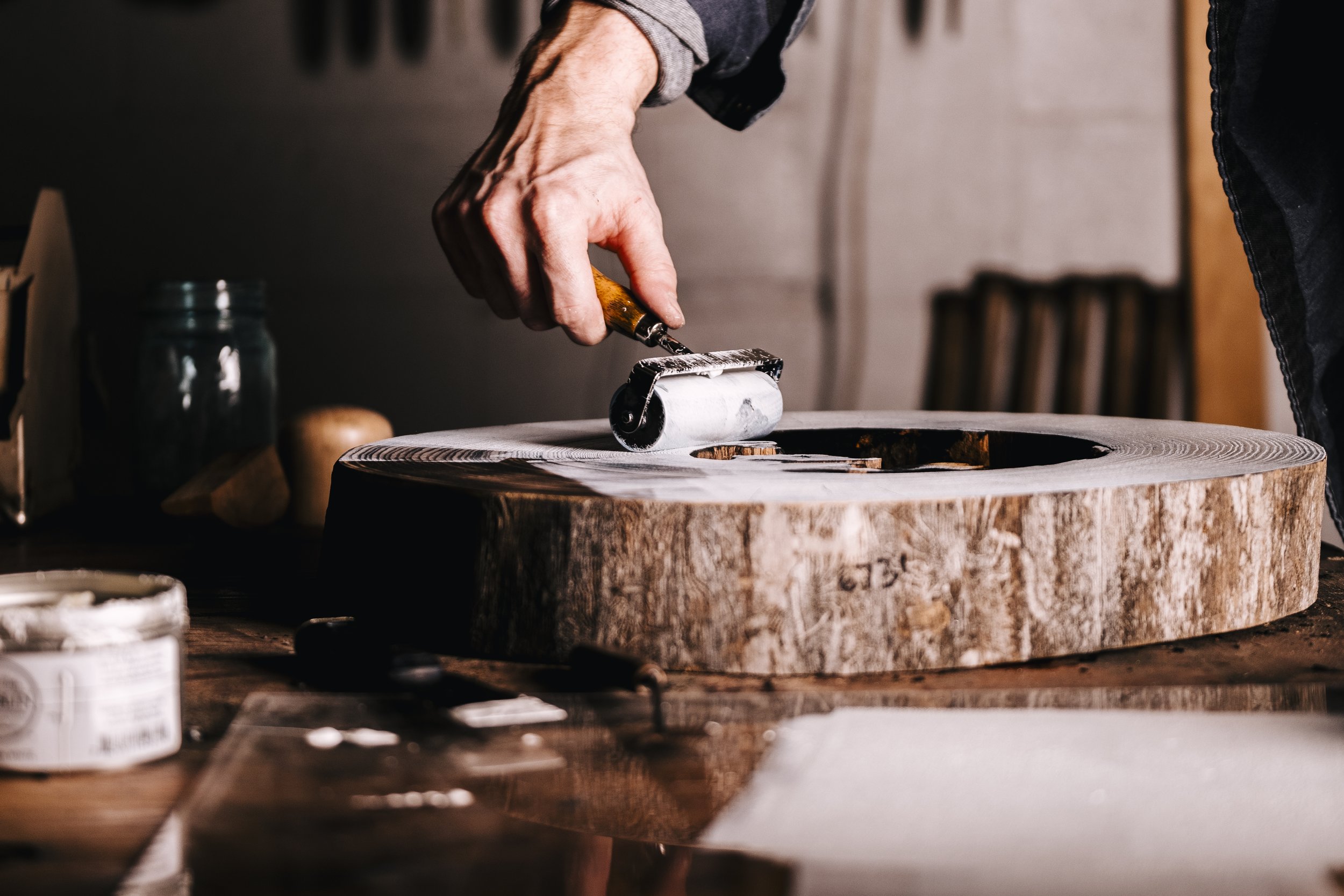
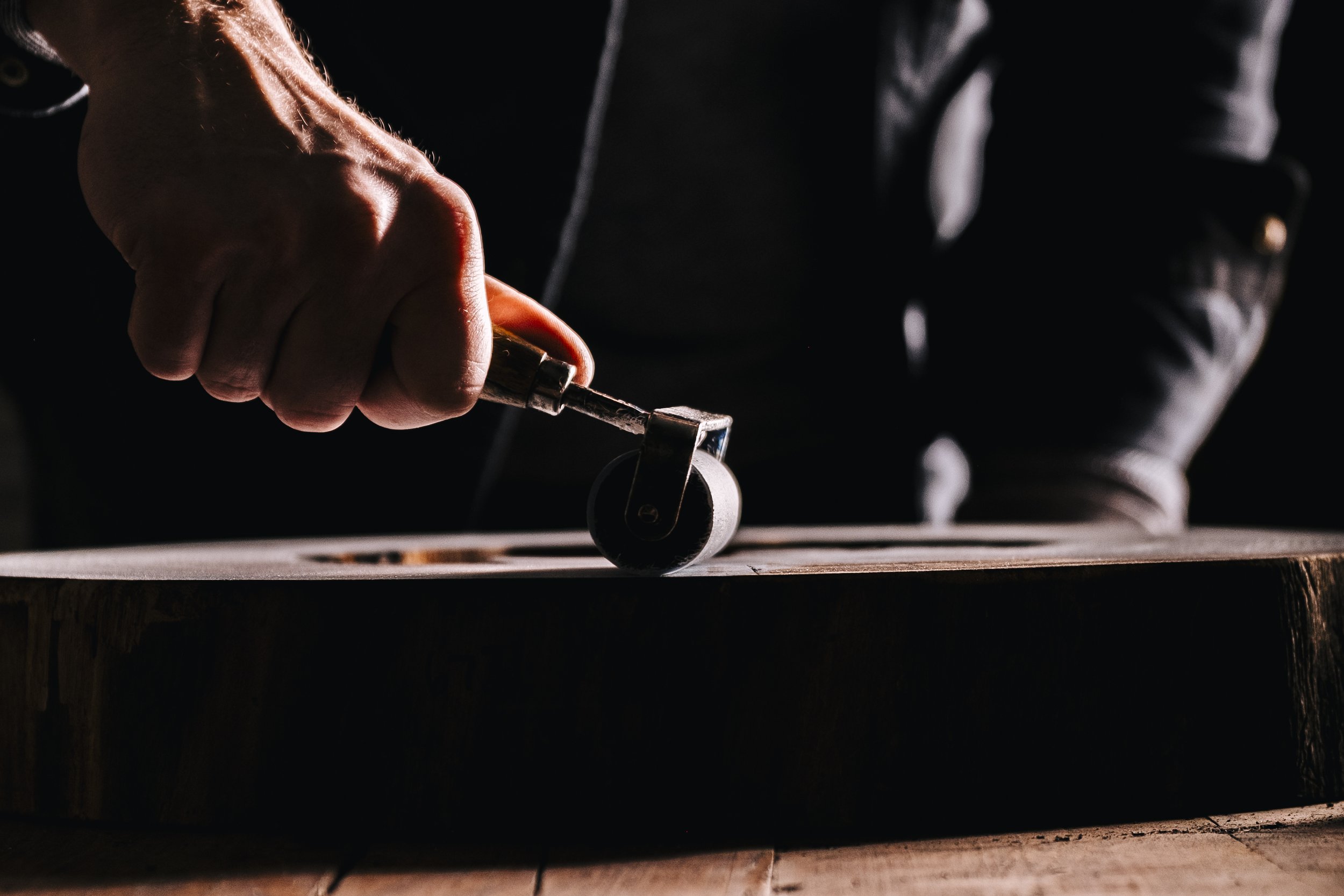
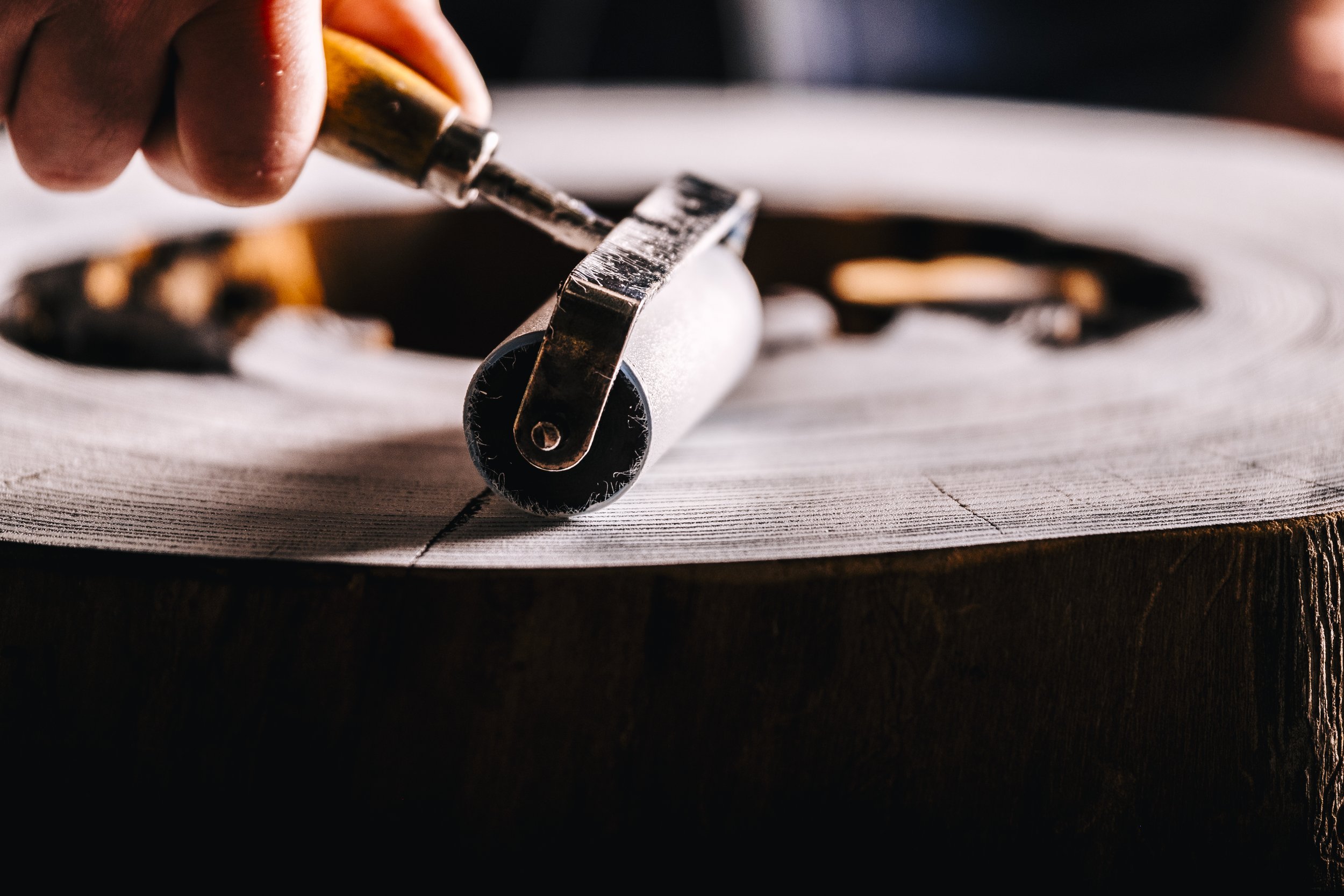
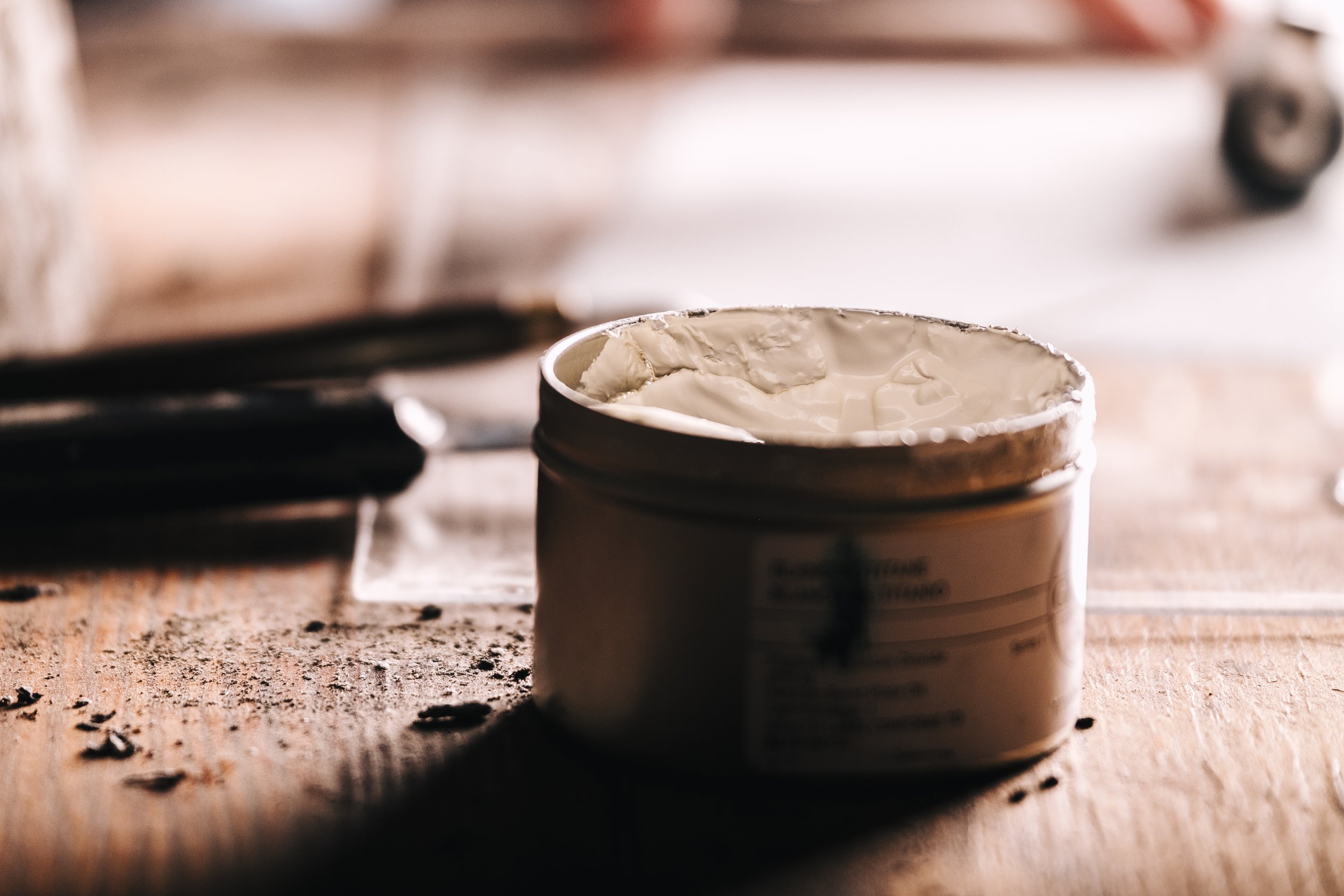
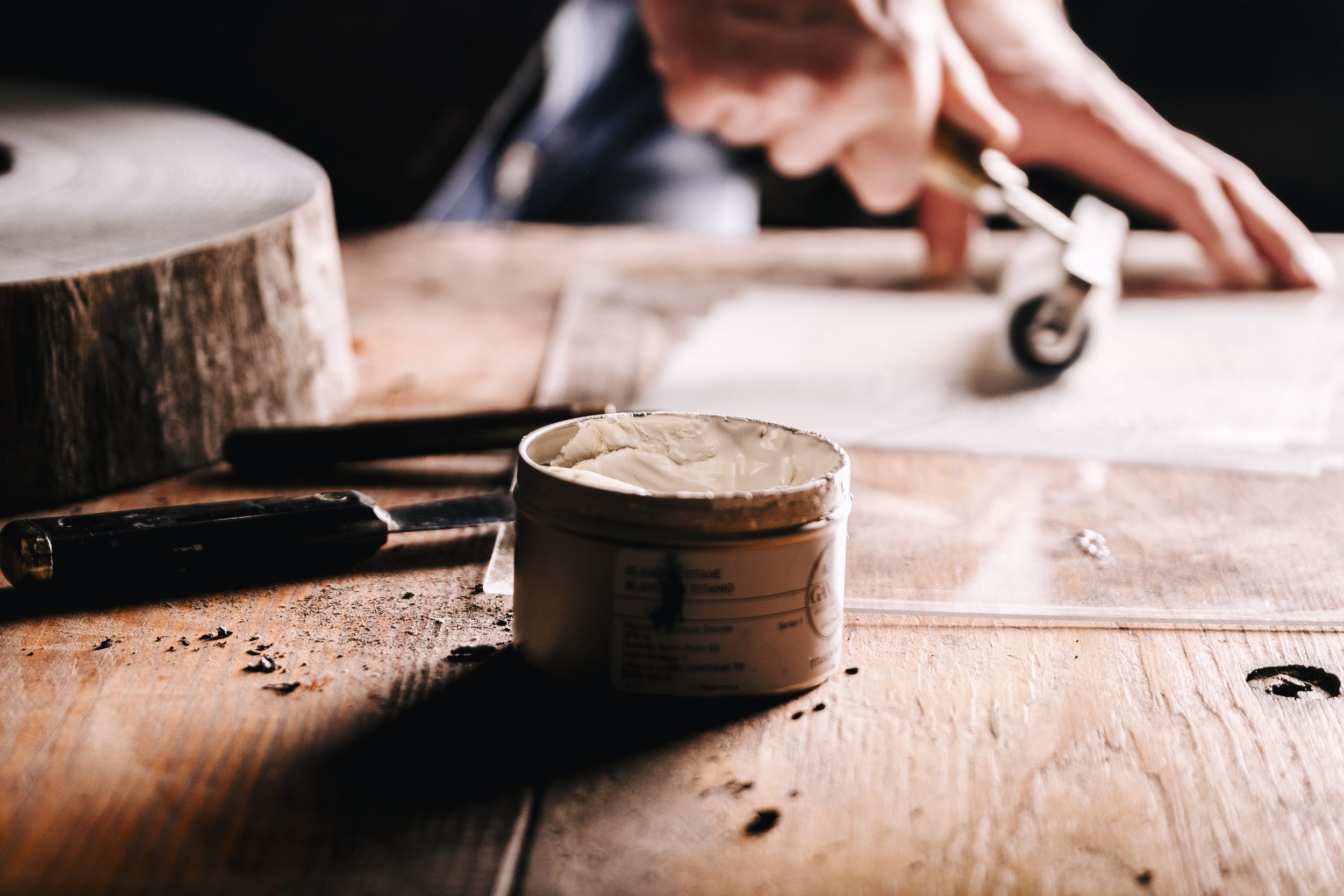
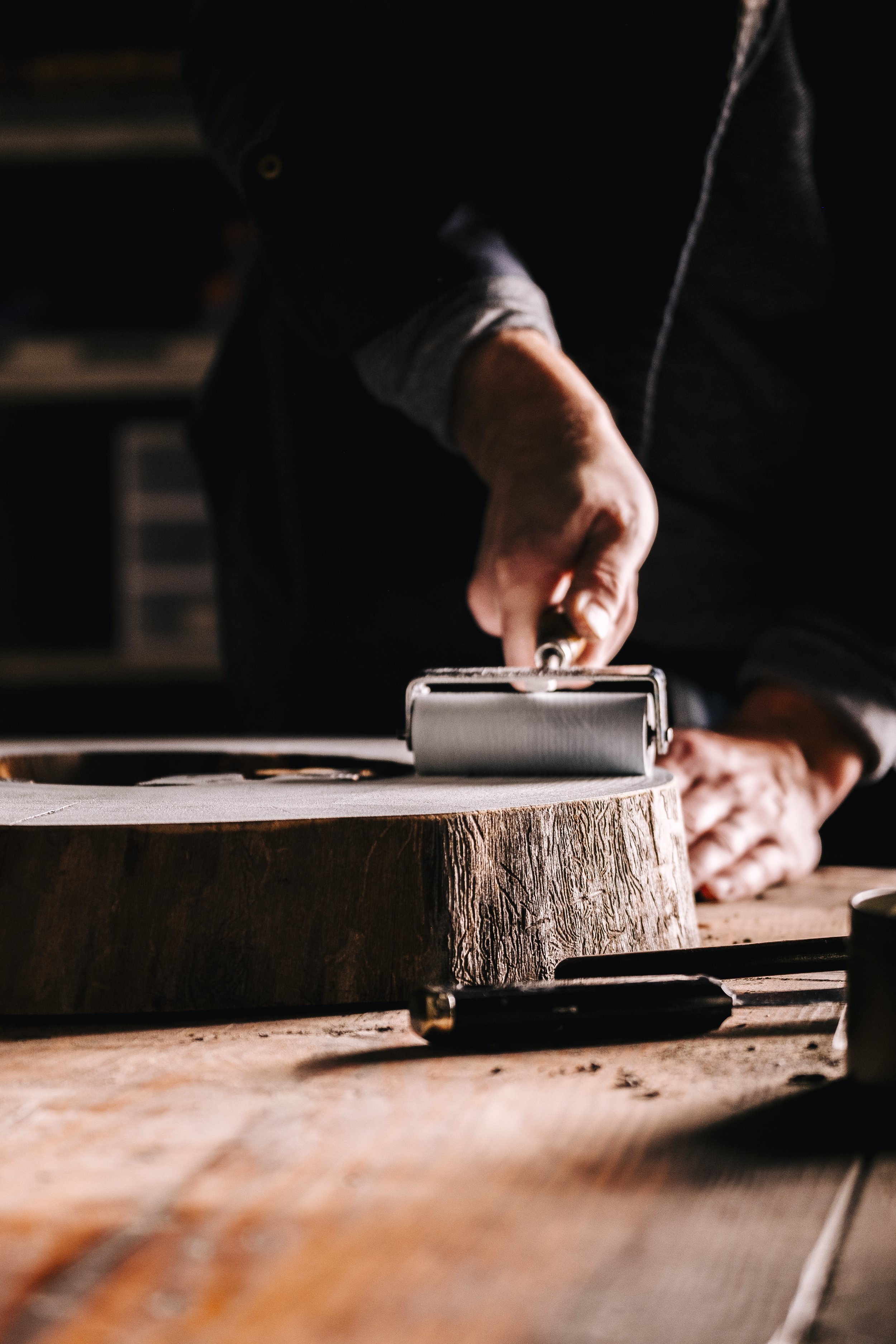
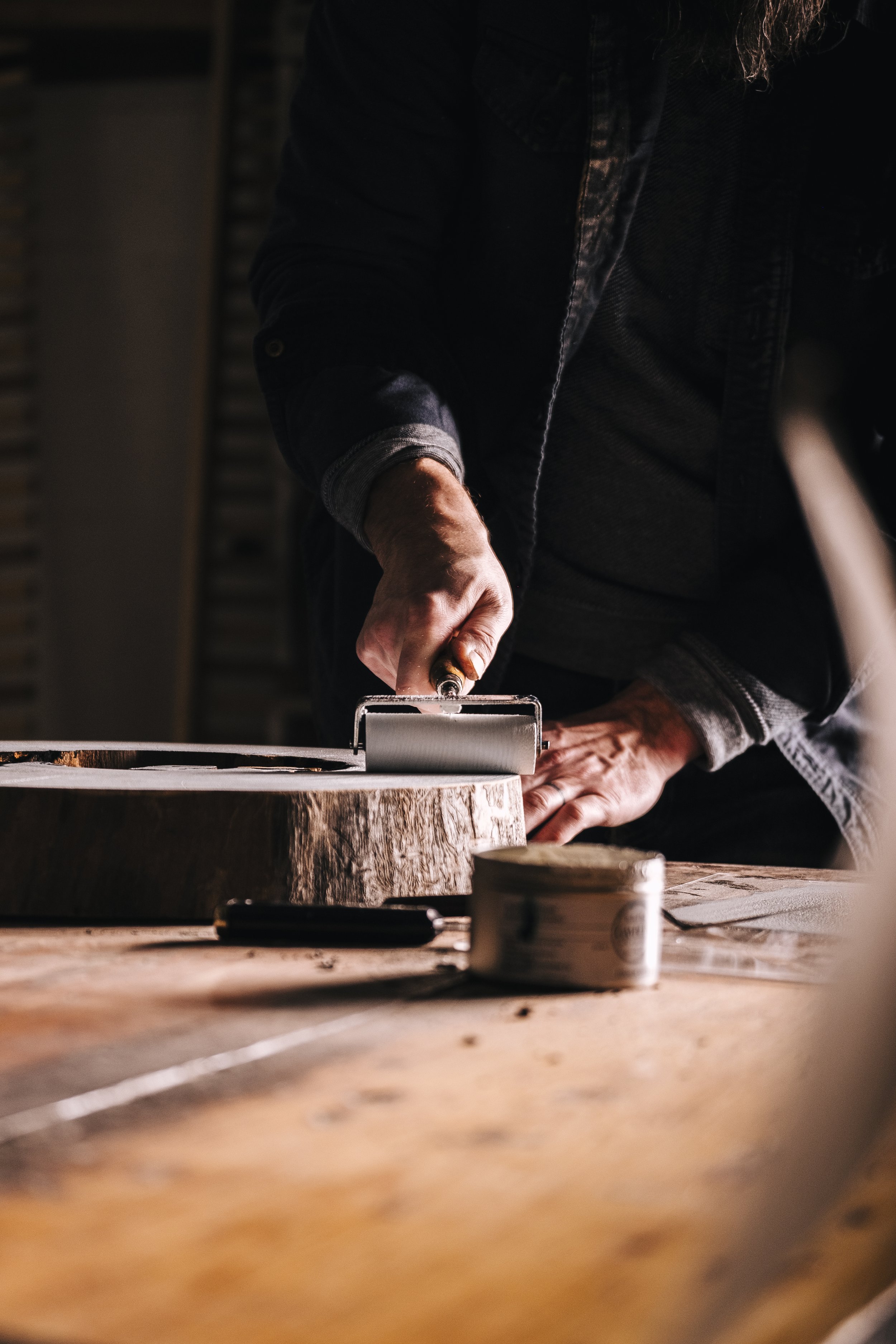
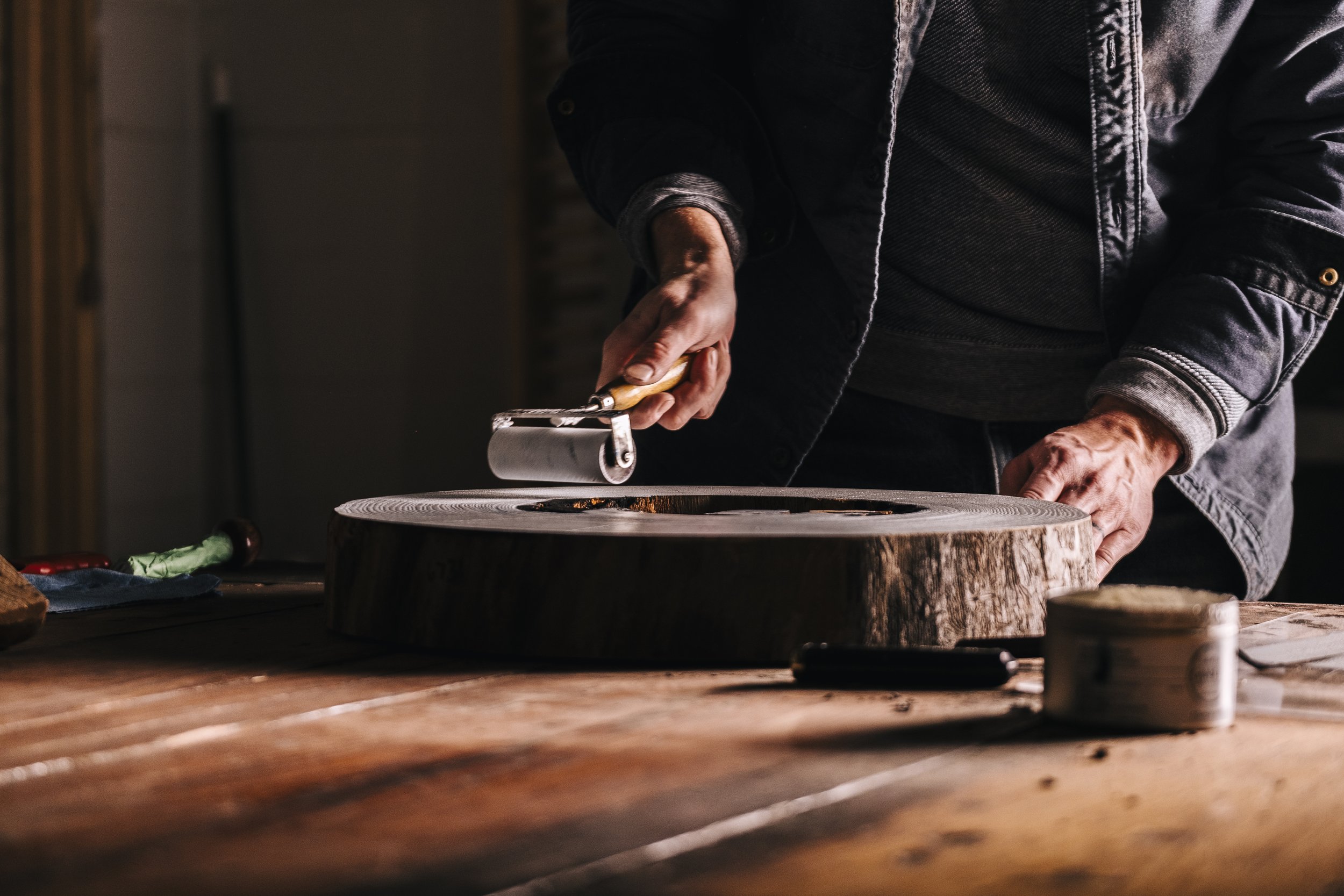
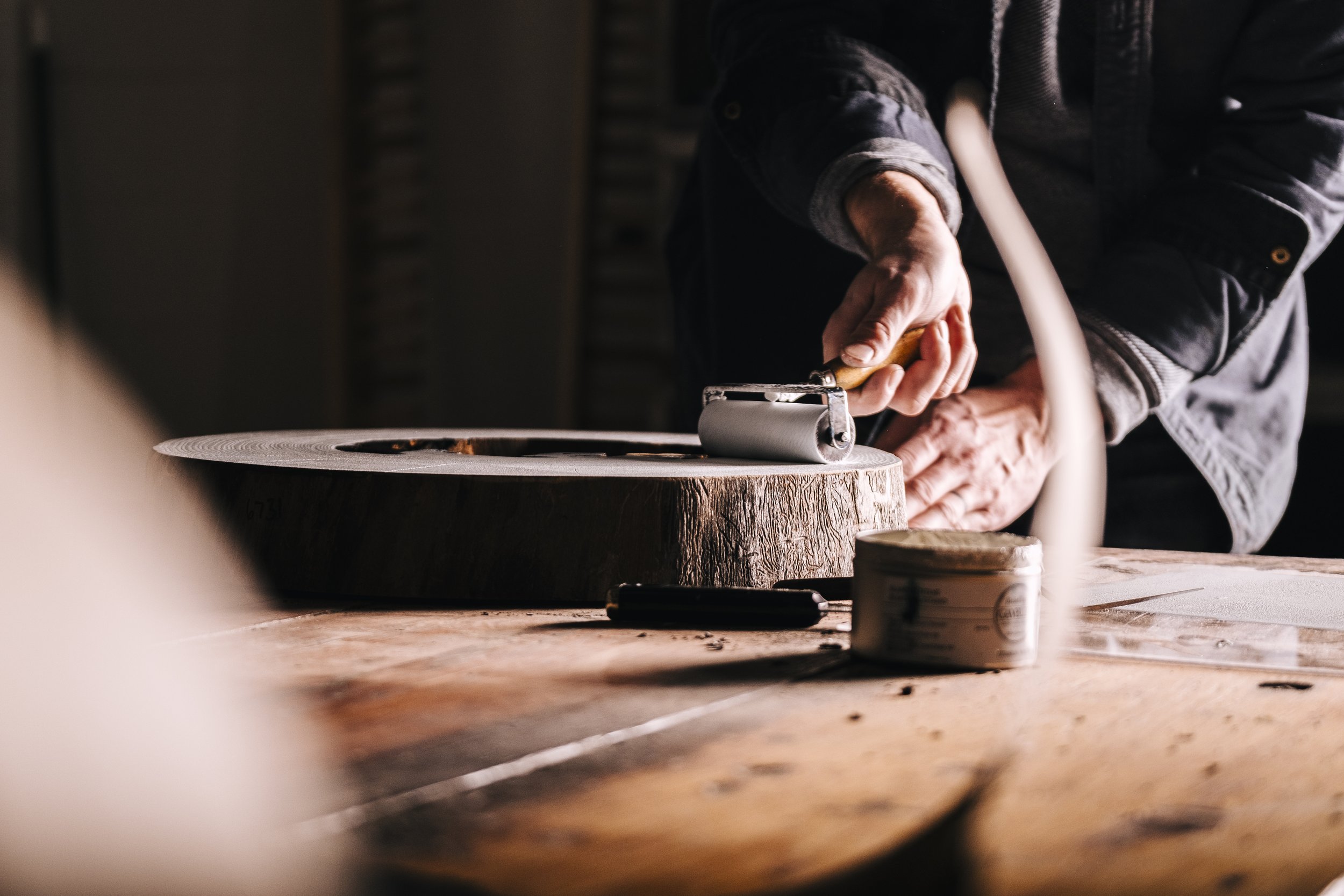

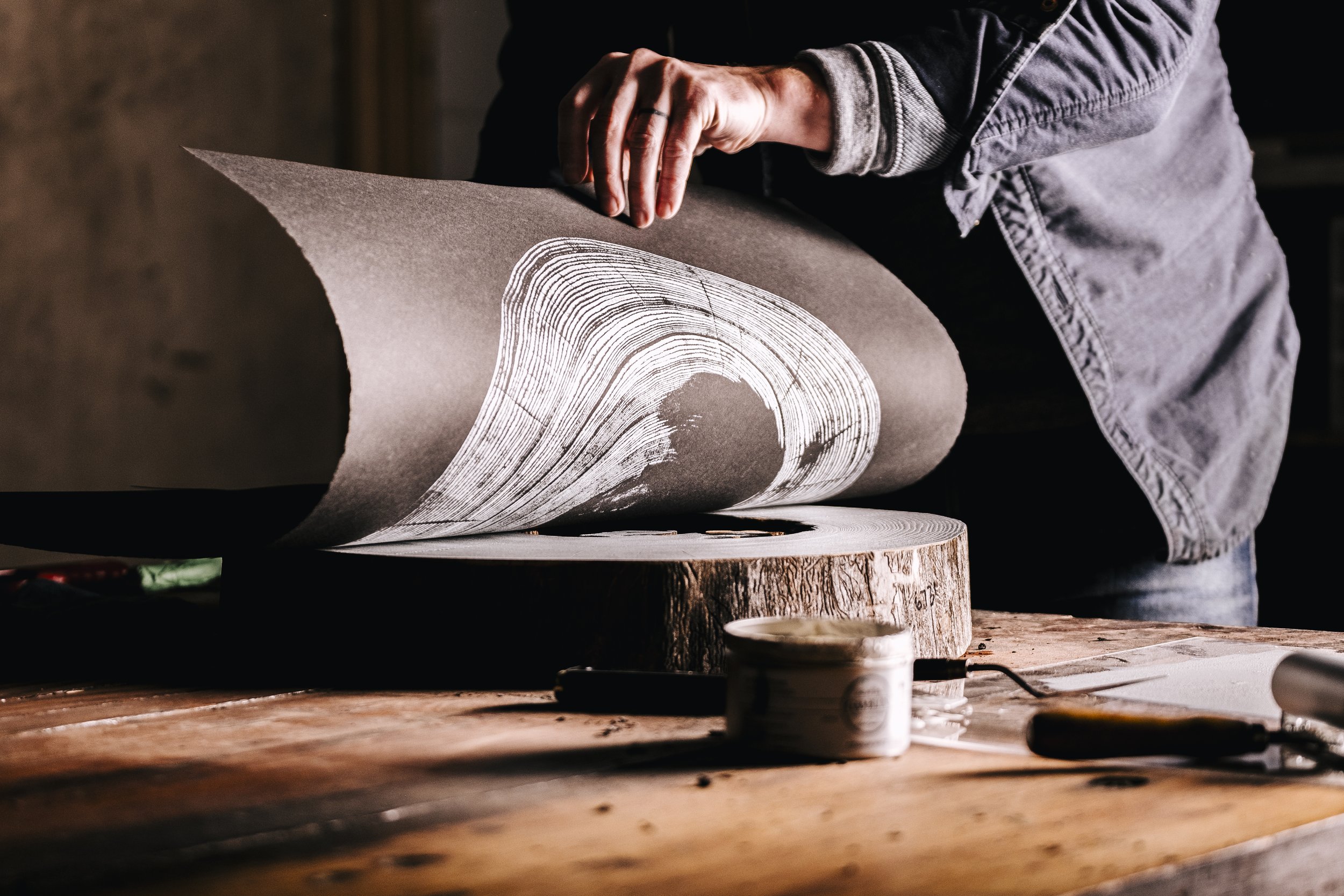
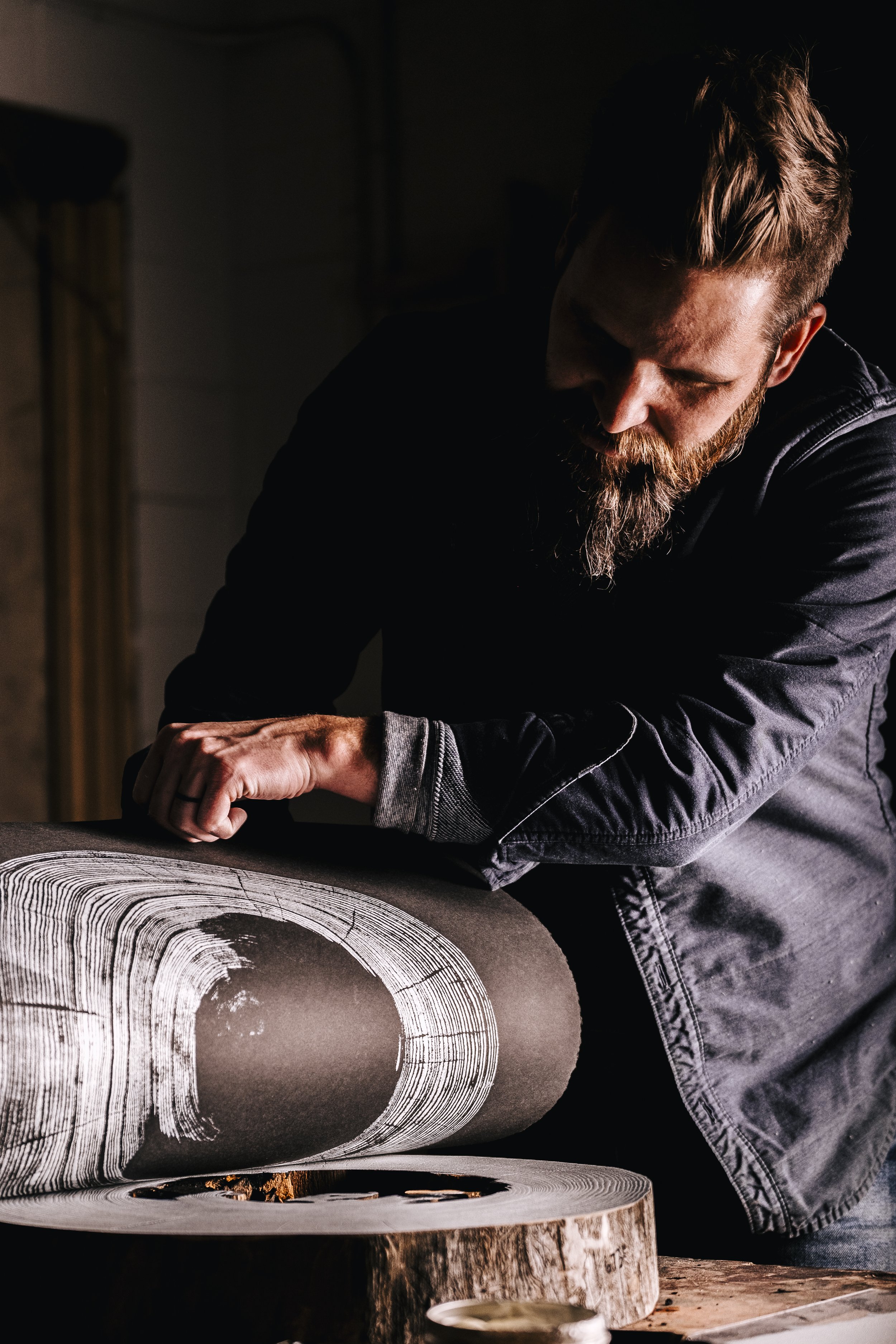
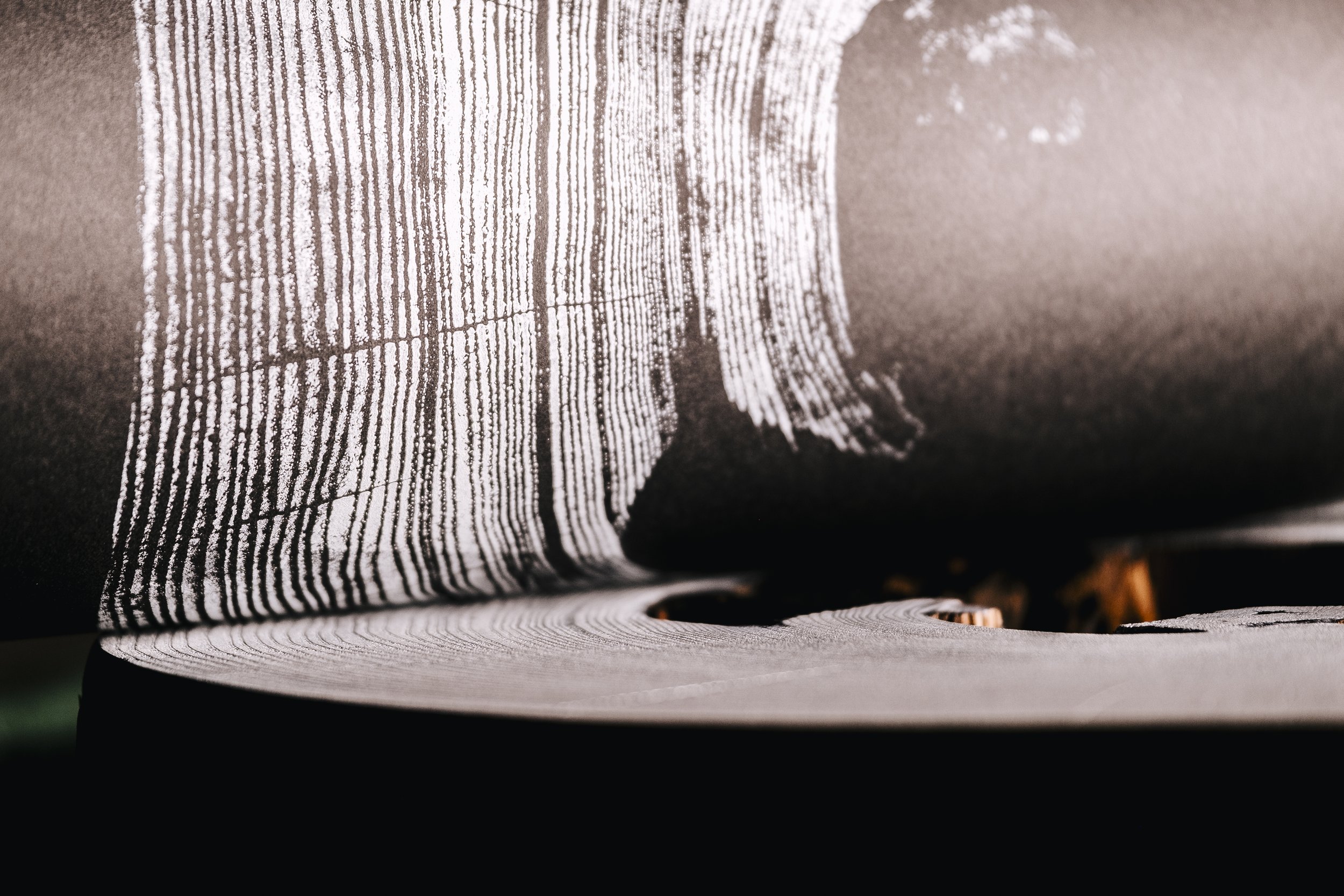
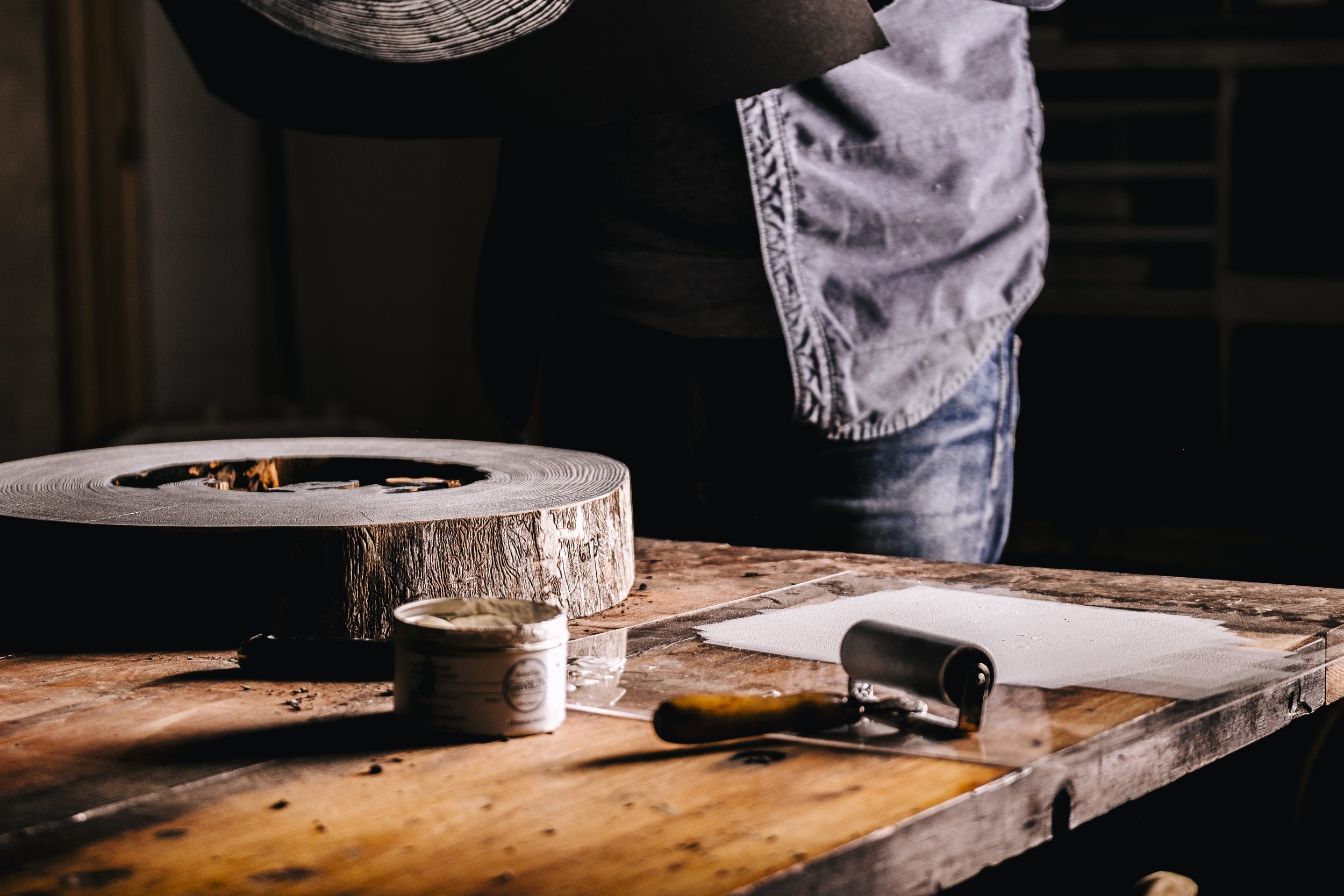

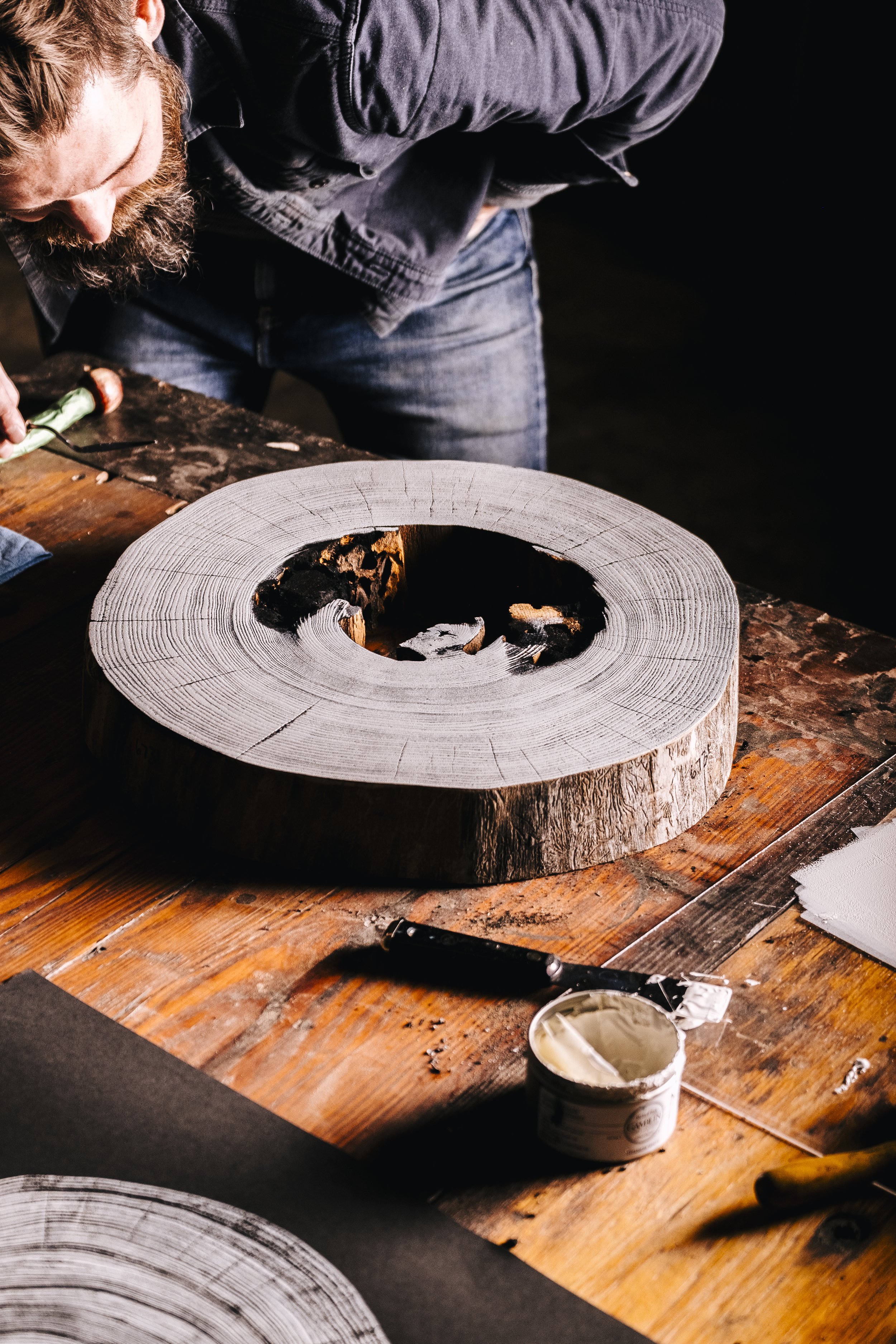
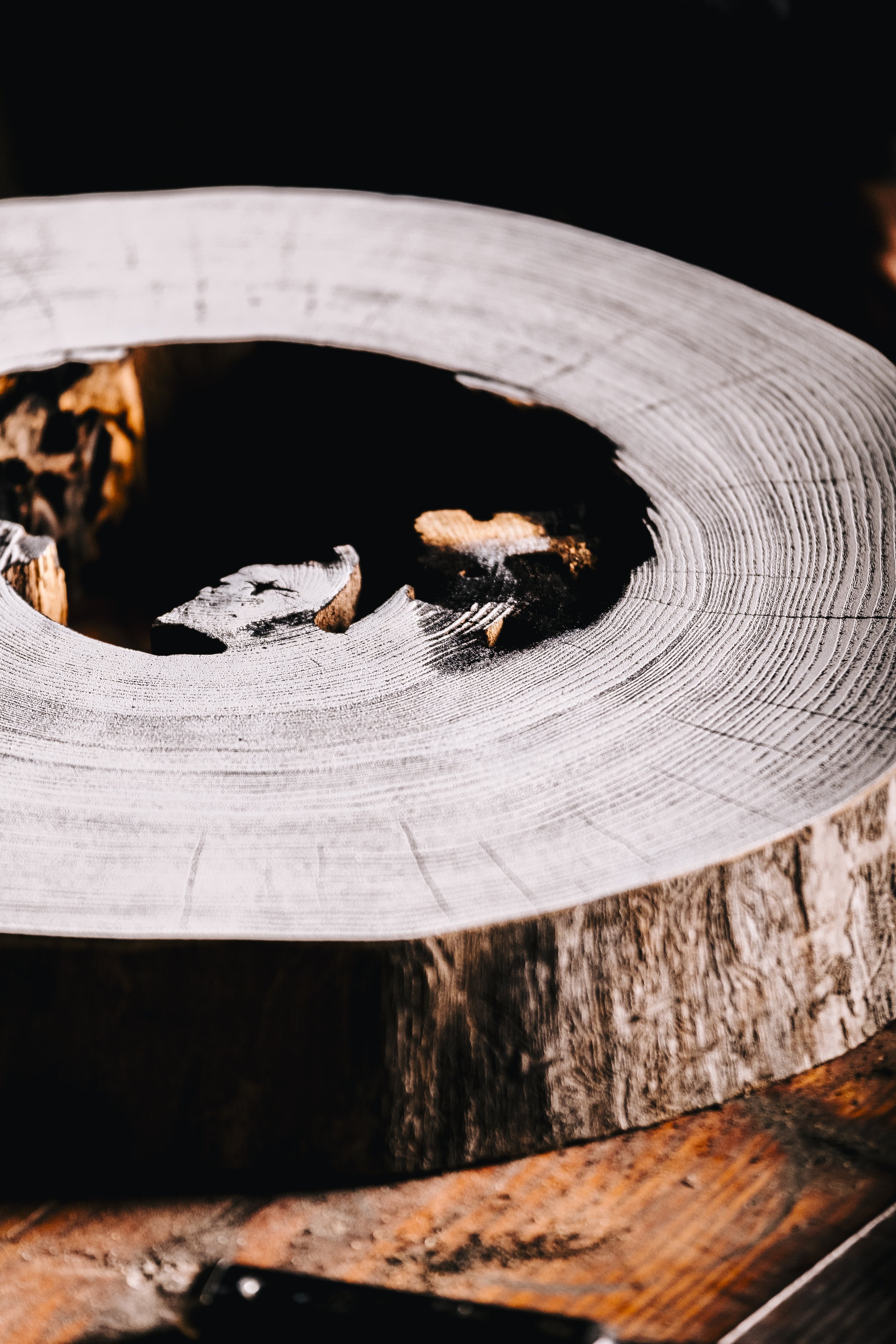


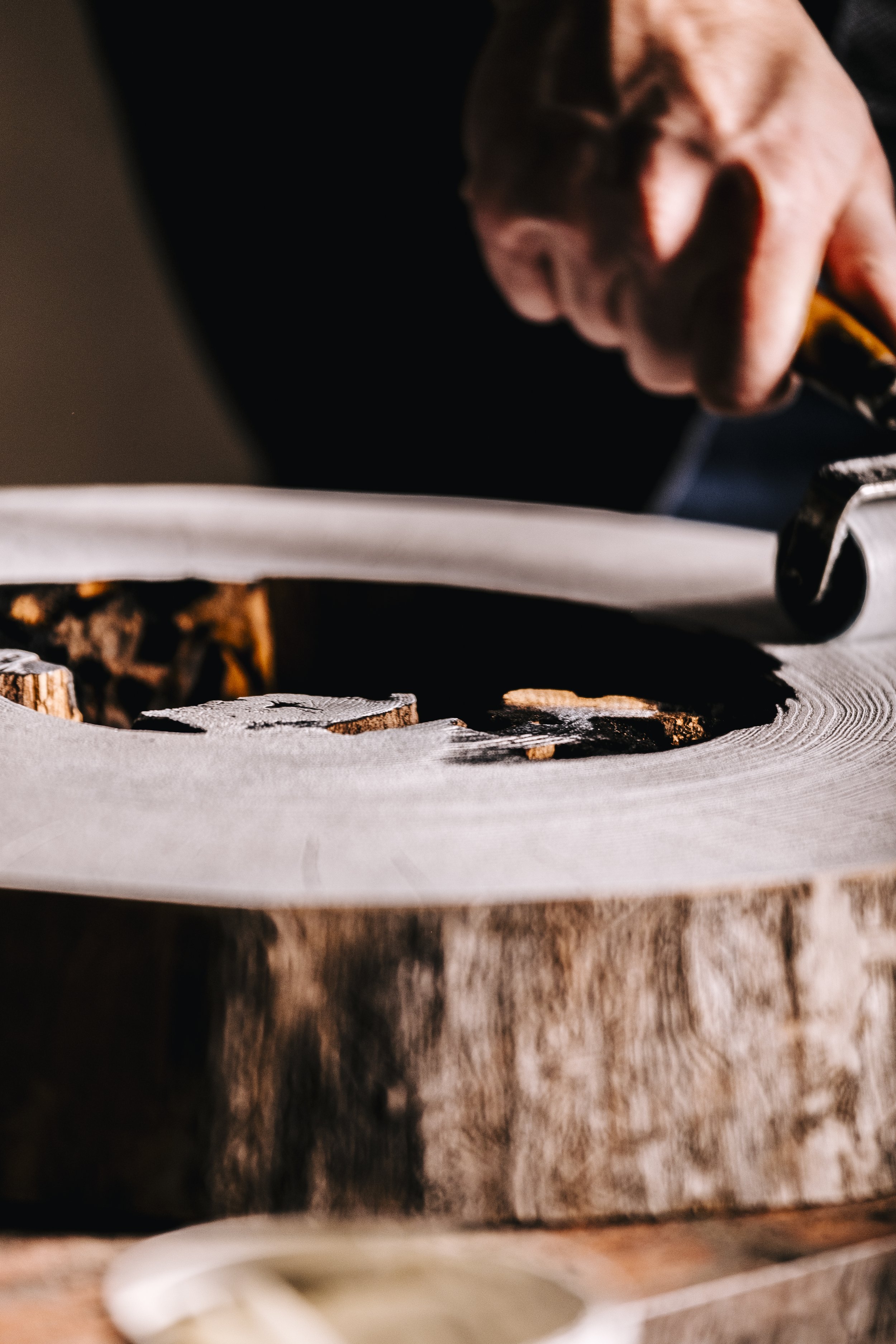
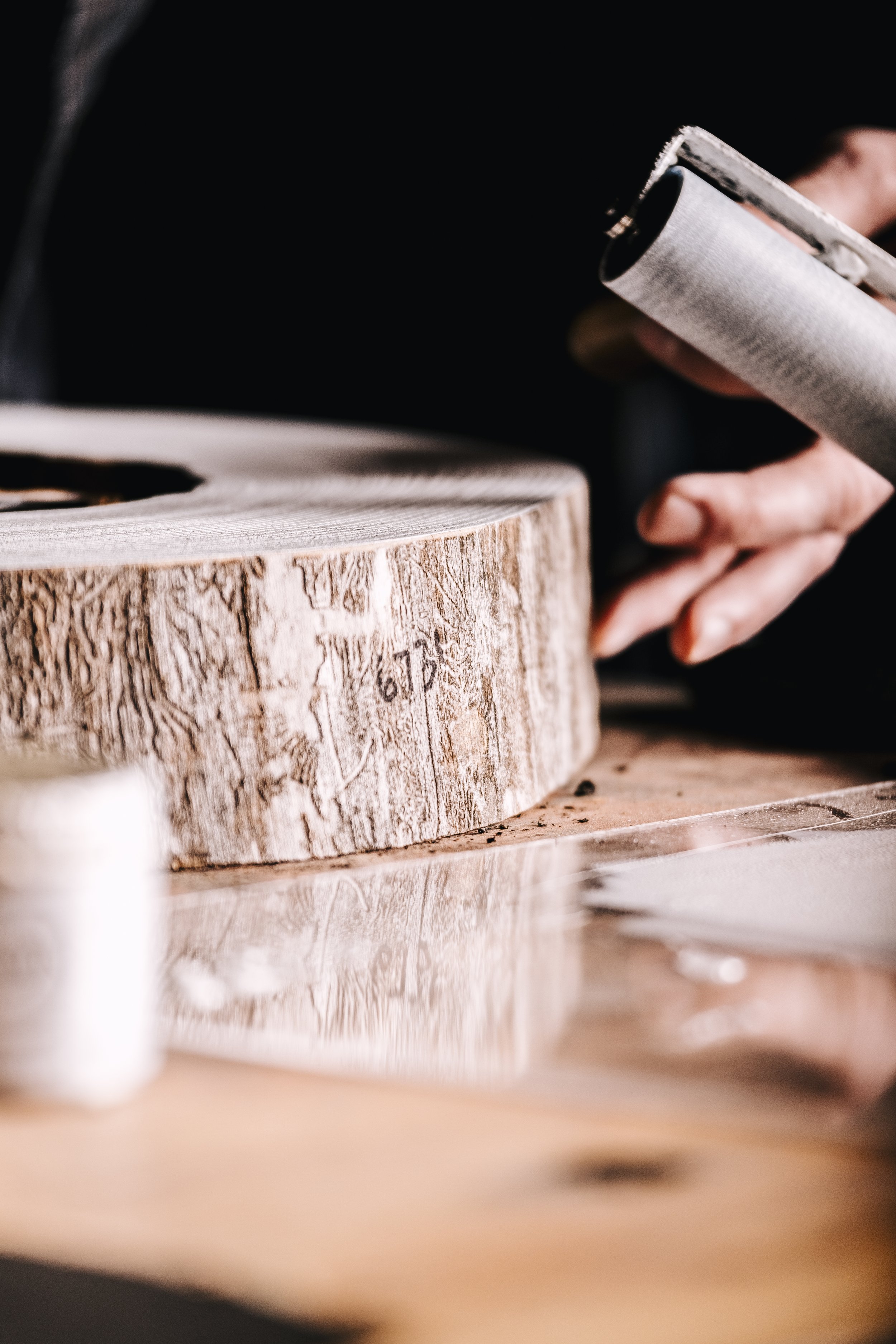
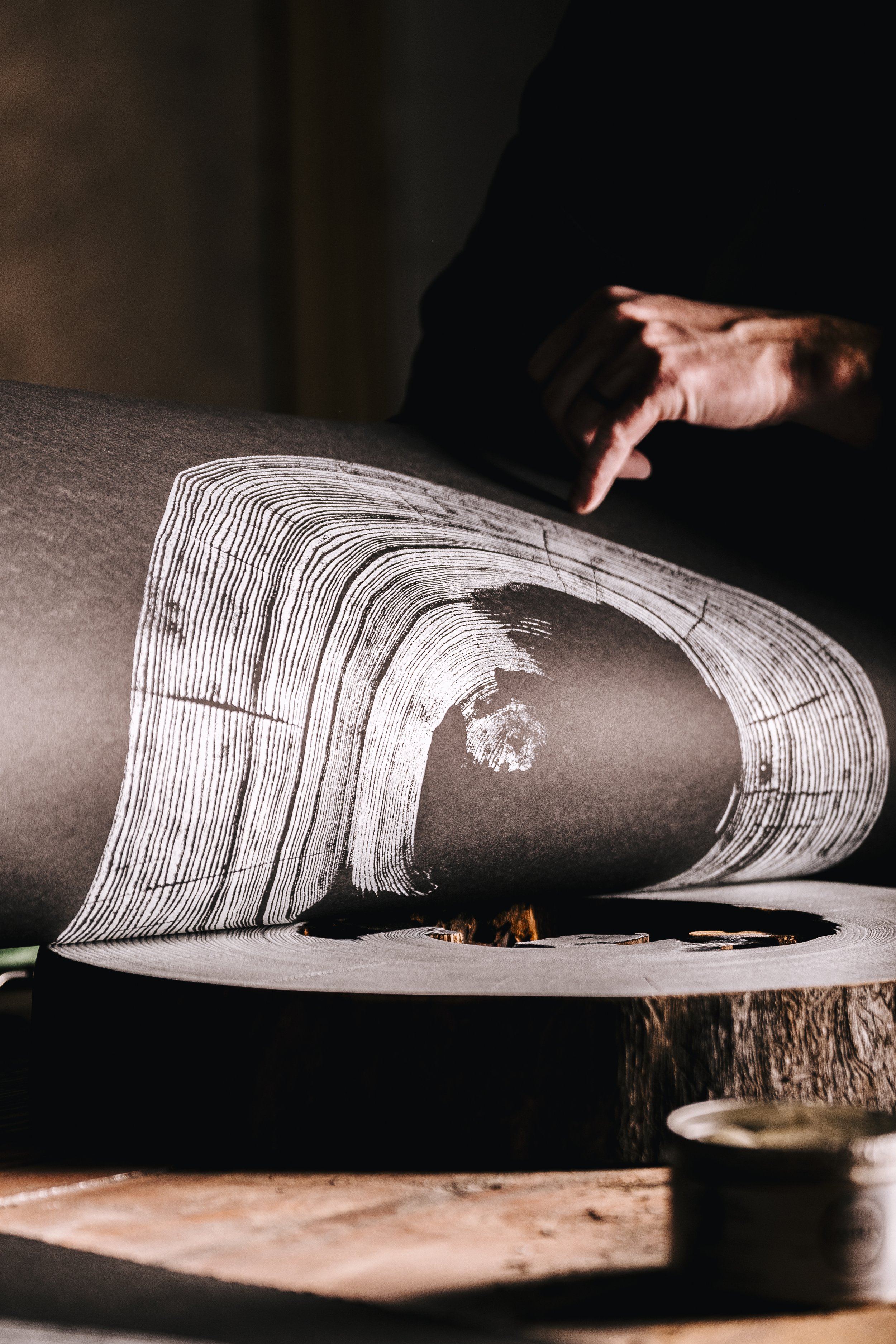
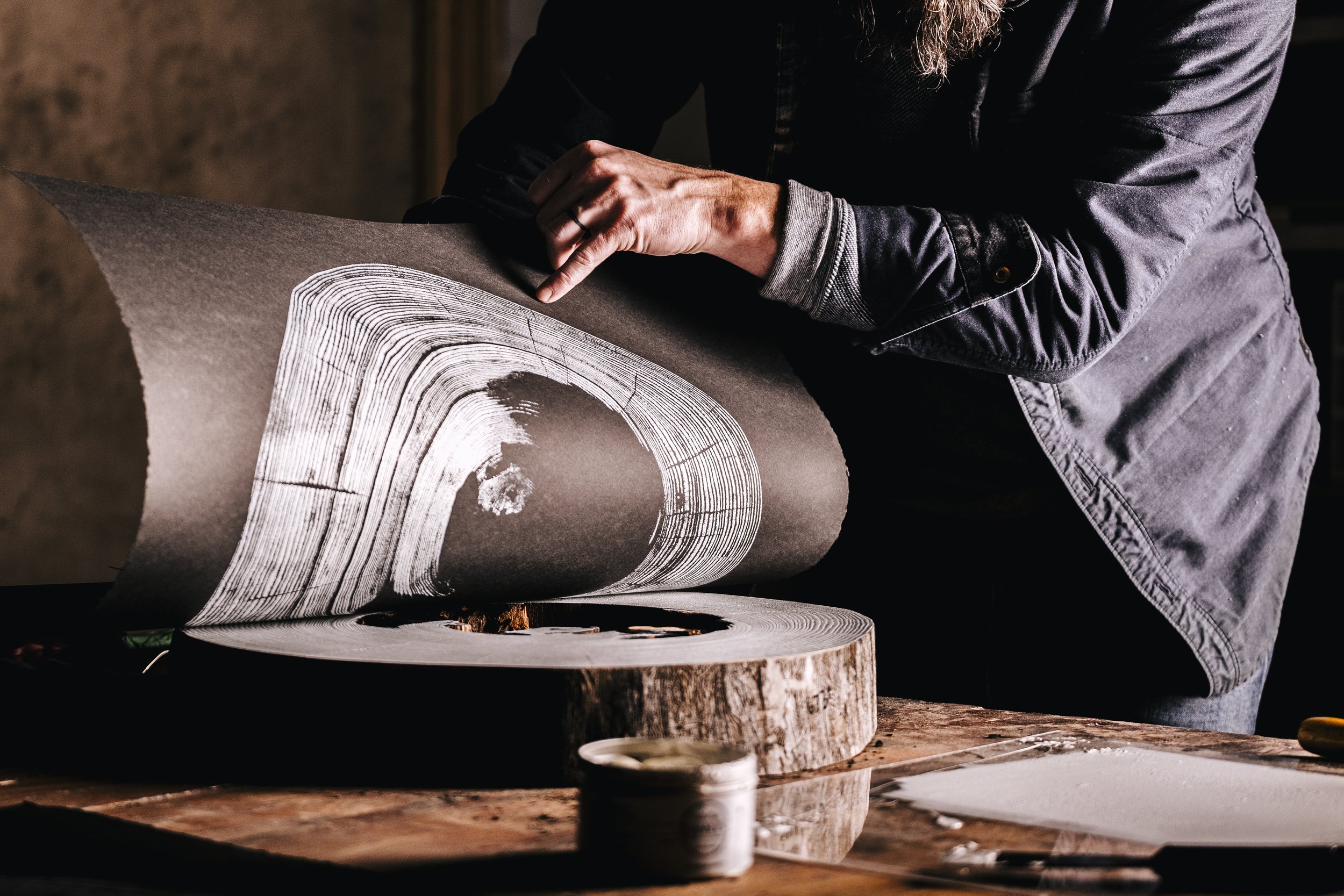

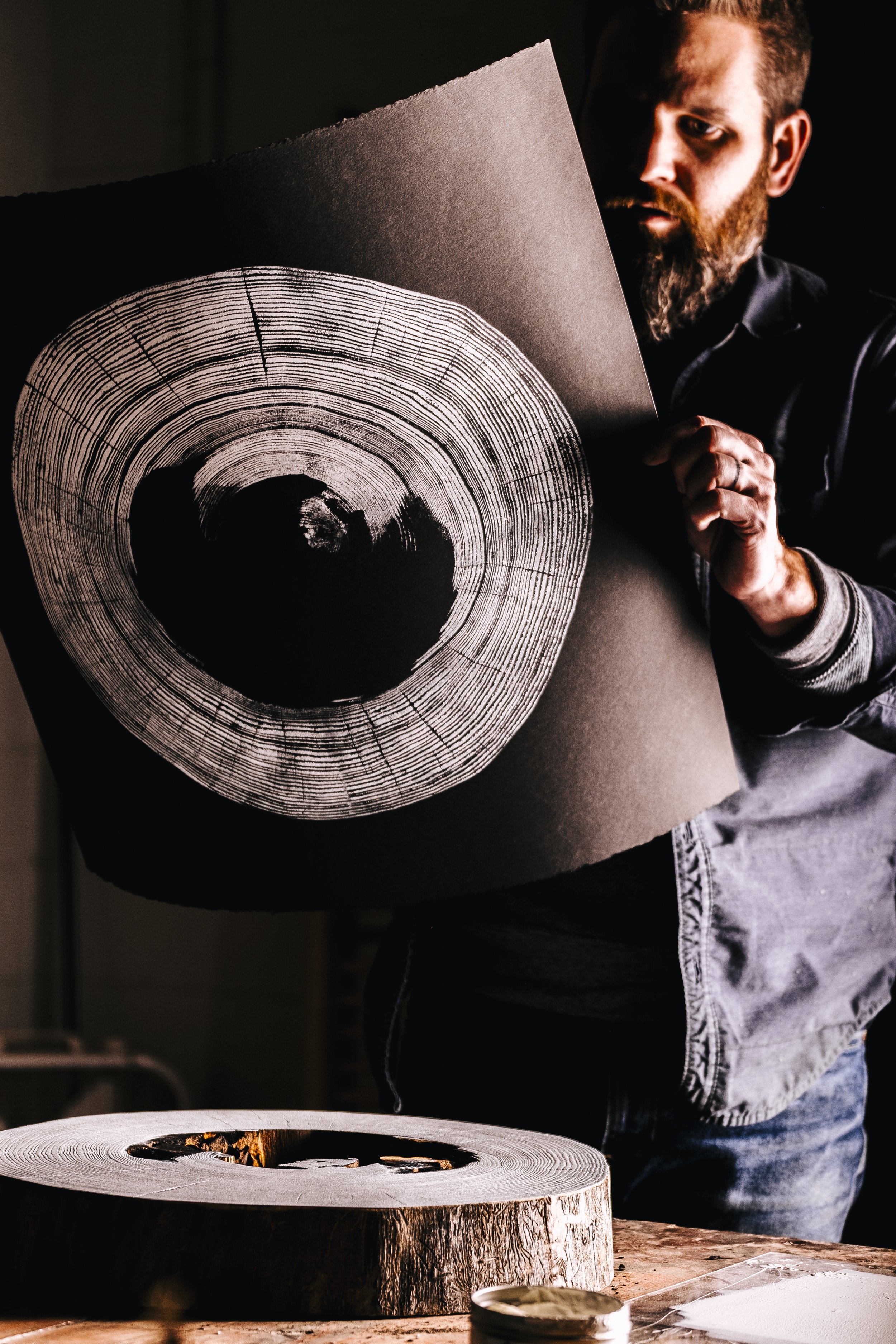
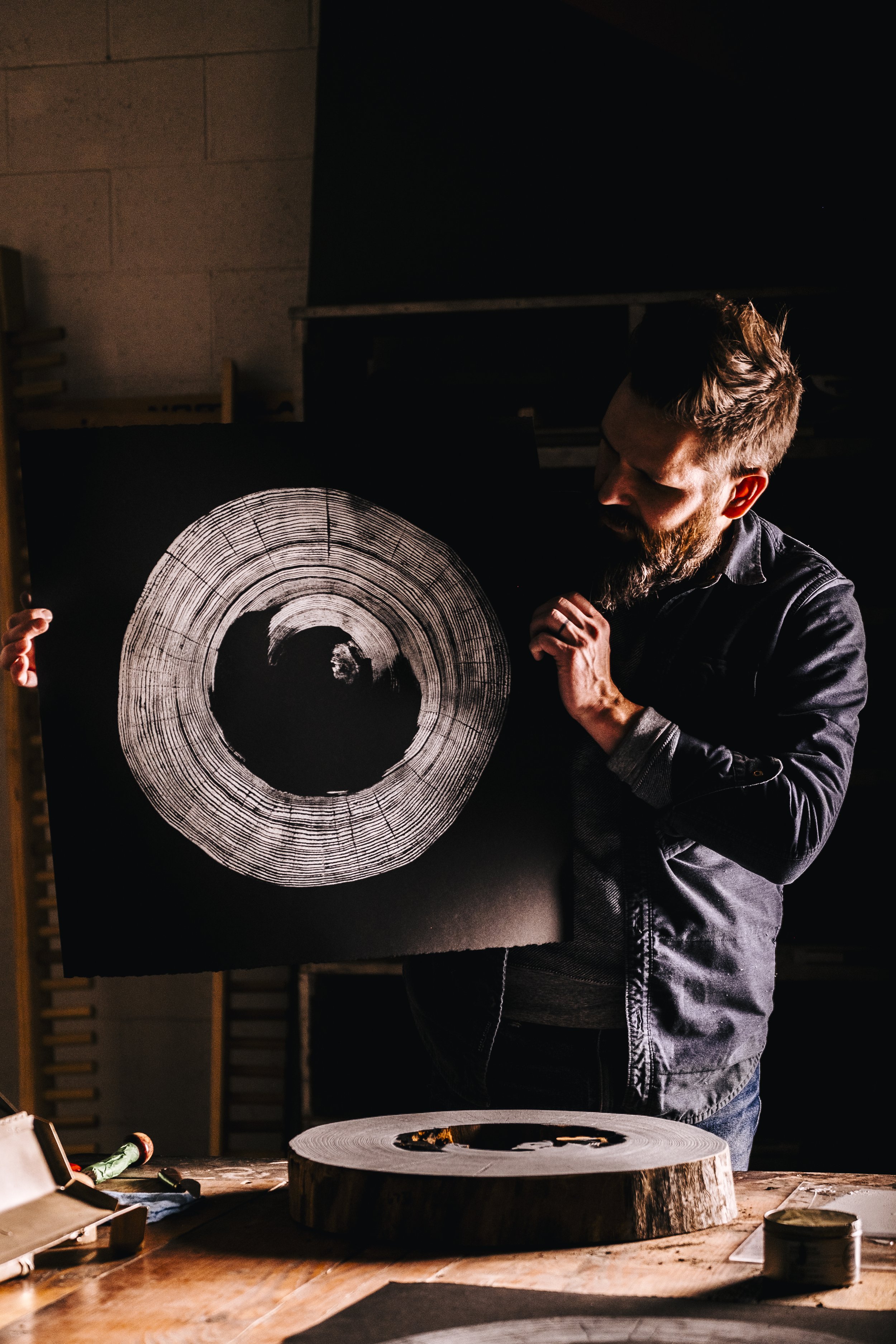


MODELS AND POPSICLES
After spending the last couple of years focusing on traveling and being limited by natural light, I was really excited to get back into studio again. With a new refreshed curiosity about how I could control light, to paint and craft what I was looking for I was excited to re-invent what I’d capture through the lens.
Shortly after moving to Chicago, I began looking for a partner who would be the perfect conduit to my madness, someone who would recognize and maybe relate to my boredom and be willing to help me re-invent the way I captured an image. After chatting to Broncolor, I found myself excited and inspired, they were interested in my narrative and before I knew it I was in studio, experimenting, trying and making all the mistakes as I best know how – leading me to find a reason to capture images in a new way.
I like to keep things simple in studio, by taking one idea that I can blow out in different ways. I decided to start a series called “Models and Popsicles” where I simply take photos of, you guessed it – models eating popsicles. There’s a beautiful Paletas shop in my neighborhood called La Michoacana Premium, they make the most amazing paletas from natural ingredients. It gives me a good excuse to visit this store often as I try find the perfect “prop” for my models. Besides, who doesn’t love a popsicle?
My studio was clearly a playground, at least for me of course – with four Siros 800 L monolights in my arsenal, I began placing them where I felt they’d give me what I was hoping to capture. One of these lights were paired with a Para 133, this would be my main key light for my model, second, I placed two gelled lights behind my model – one on either side and lastly, I placed one gelled light in the rear for my backdrop. I then paired this with a large reflector to even out the gradient a bit on the background, I then quickly synced all my lights up to the Broncolor app on my iPad and set the dials to what I felt would be appropriate. This would be my first set up, I usually go into a shoot with the intention of doing 2-3 light set ups.
Once I had placed my lights, I then consulted with my model Karlie Thornton (http://instagram.com/oshun.ba), I let her know that I was planning on shooting with gels and I asked what the best colors are for African American skin. She simply replied, ”In the moonlight, black skin turns blue.” and then continued to suggest how reds and purples work really well on darker skin. I love to include my models in the creative process and embrace a collaborative approach to how I shoot.
After gelling up my key-light with red, backlights with purple and my backdrop light with yellow, I started shooting. I began seeing nuances of how the colors were reacting to Karlie’s skin, that in combination with how natural she was in front of gave me the results I was hoping for – I shot a few more photos and then unwrapped a popsicle and continued shooting. Somehow the popsicle lets the model relax and the shots end up being really fun!
I switched up my gels and my setup two more times by mixing in different. My usual process is having all my lights set up for my first scene and the way I switch things up is by removing lights until I have only one light on my subject. As I removed lights, I was left with one light paired with my Para 133 - I flagged off half the Para so I could control how the light fell on Karlie’s face and hair. The result was great, I had nice even lighting across her face and as an added effect I through in some atmosphere to bring a bit of drama to the scene. This time around Karlie’s expressions were more reserved, the scene felt golden.
After playing around in studio I always feel a bit more liberated, I like to compare it to that feeling you get when you finish a Lego construction for the very first time. There’s a sense of fulfillment but you’re also really excited to move to the next one. In the future, I’ll be doing a lot more research on how certain colors work better with different skin tones. I think finding that perfect pairing is really what made love the results of this shoot.
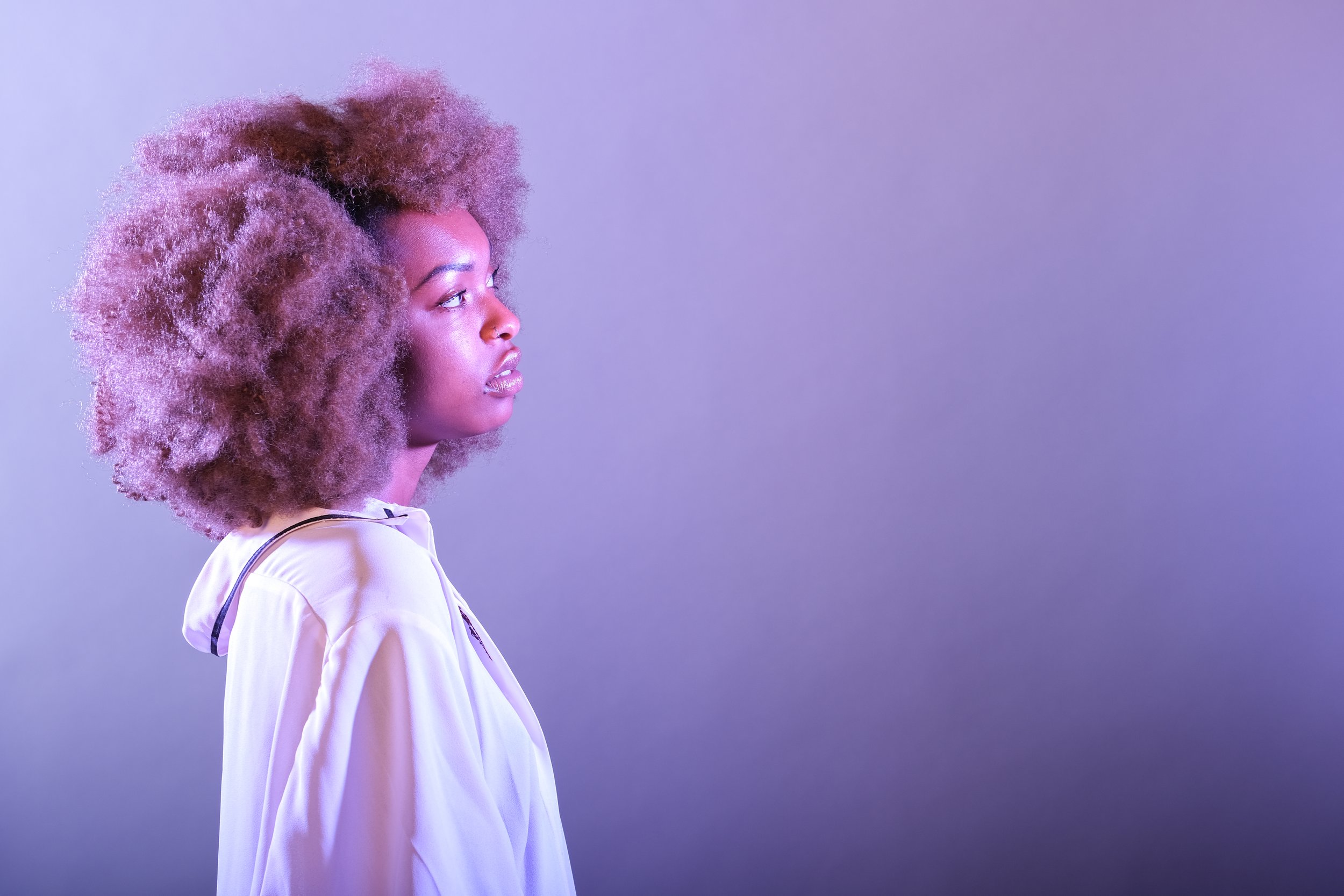

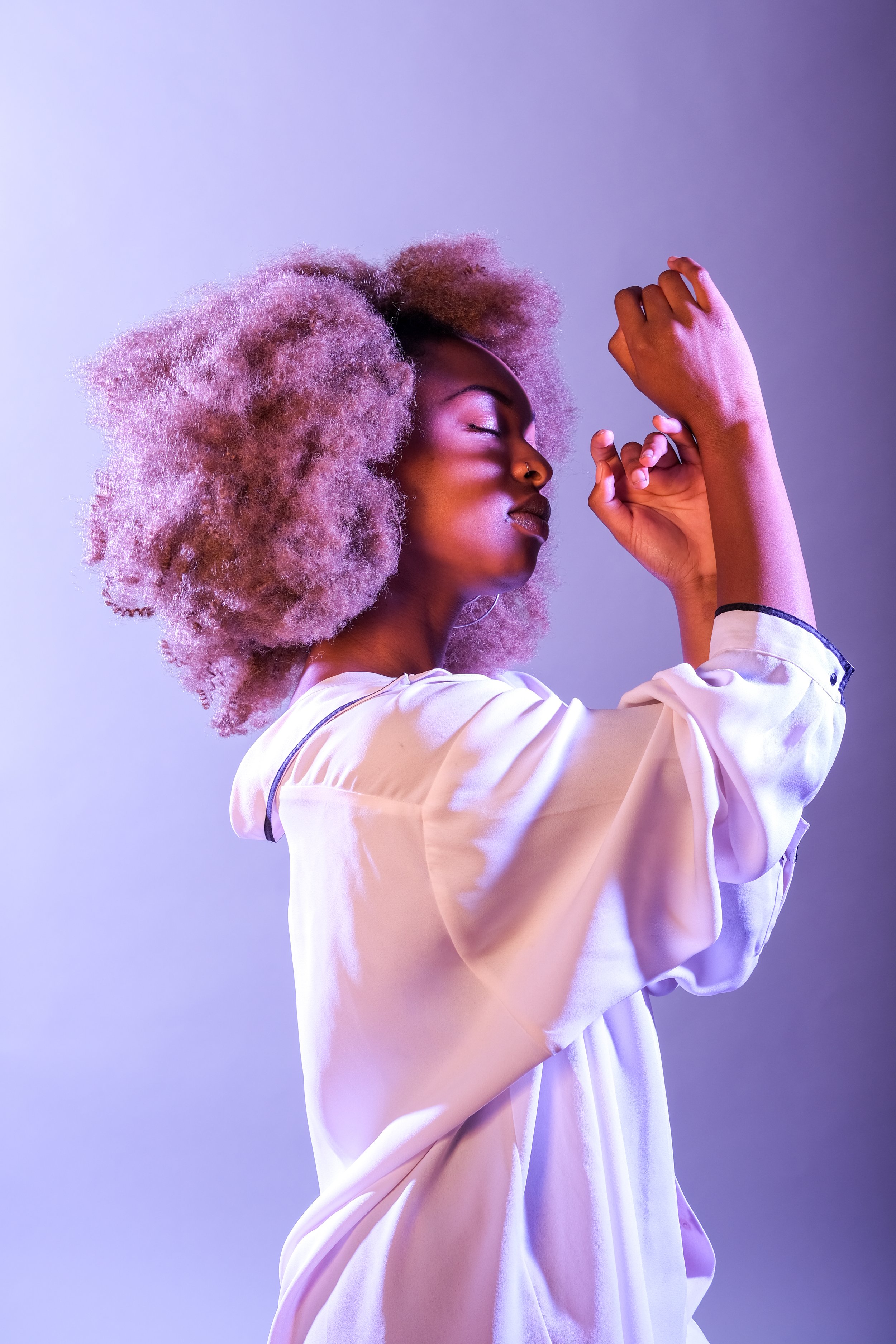
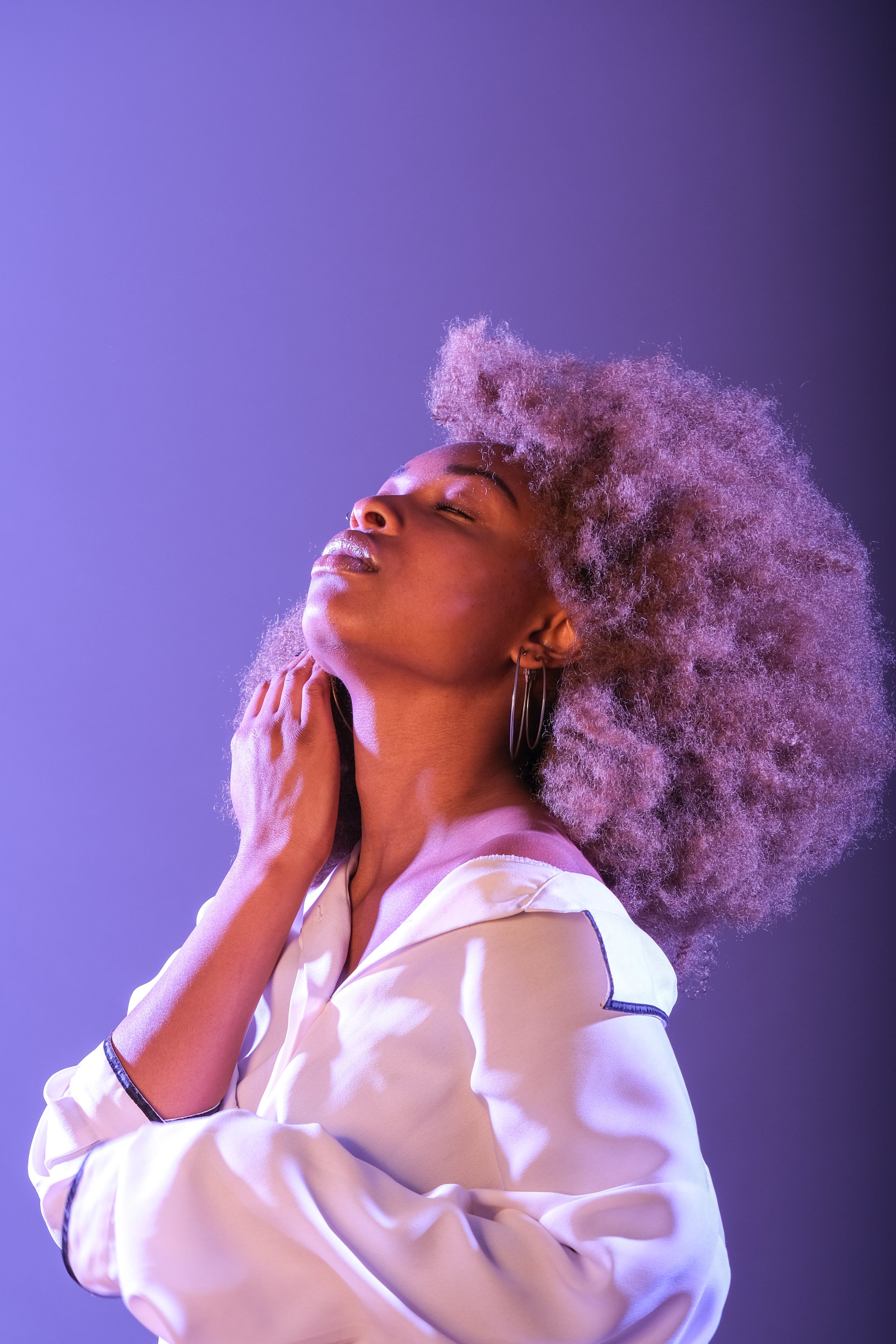
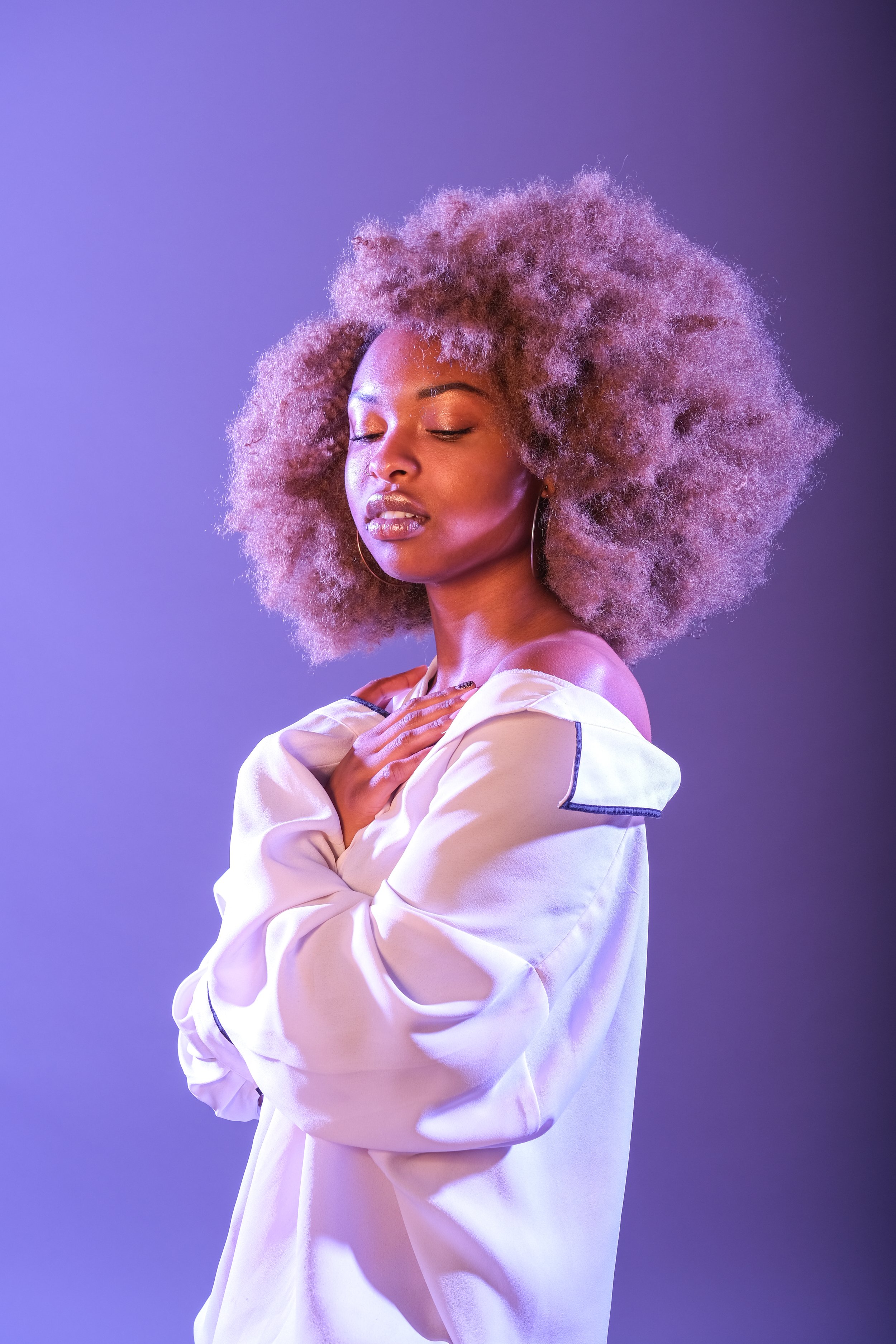
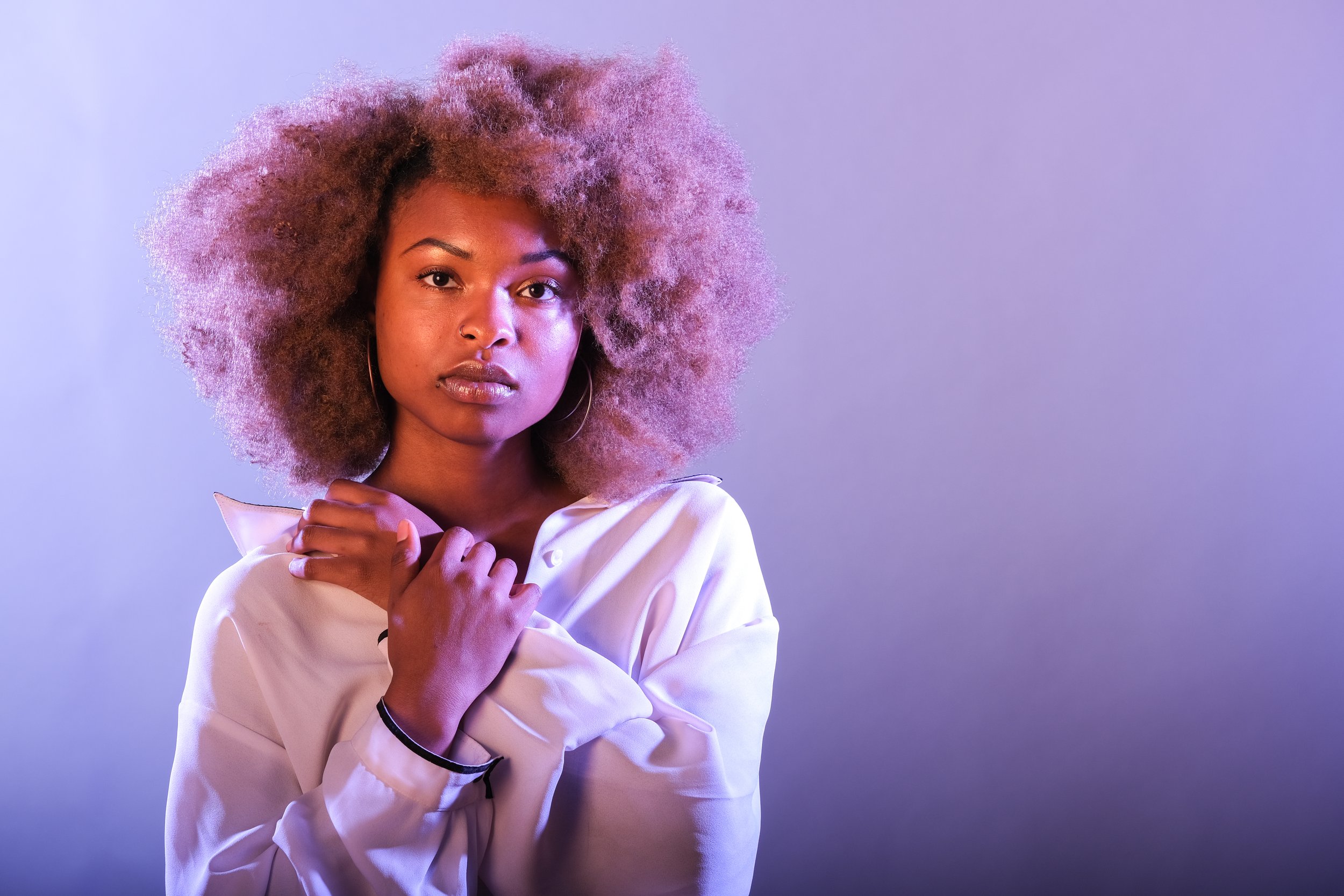


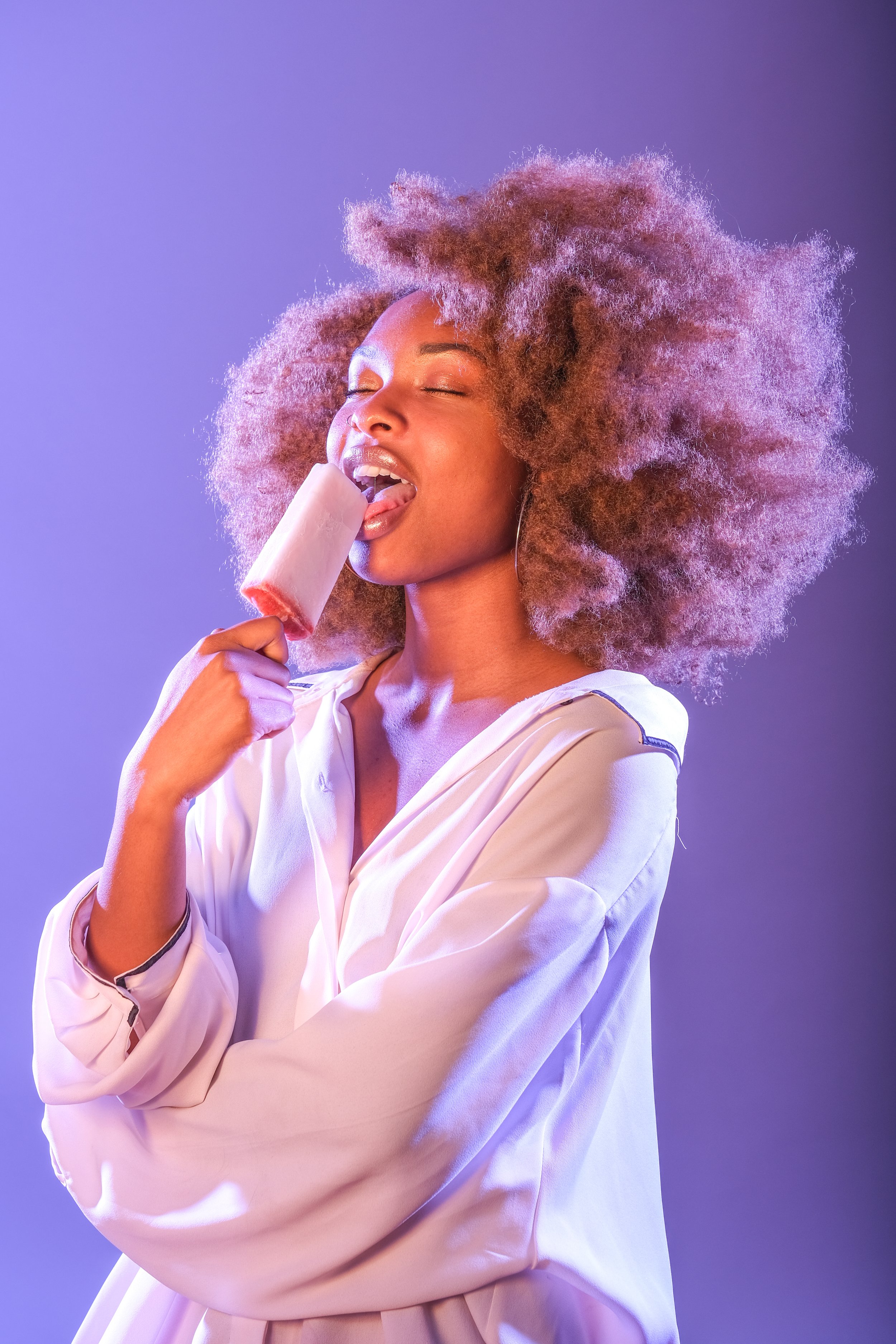
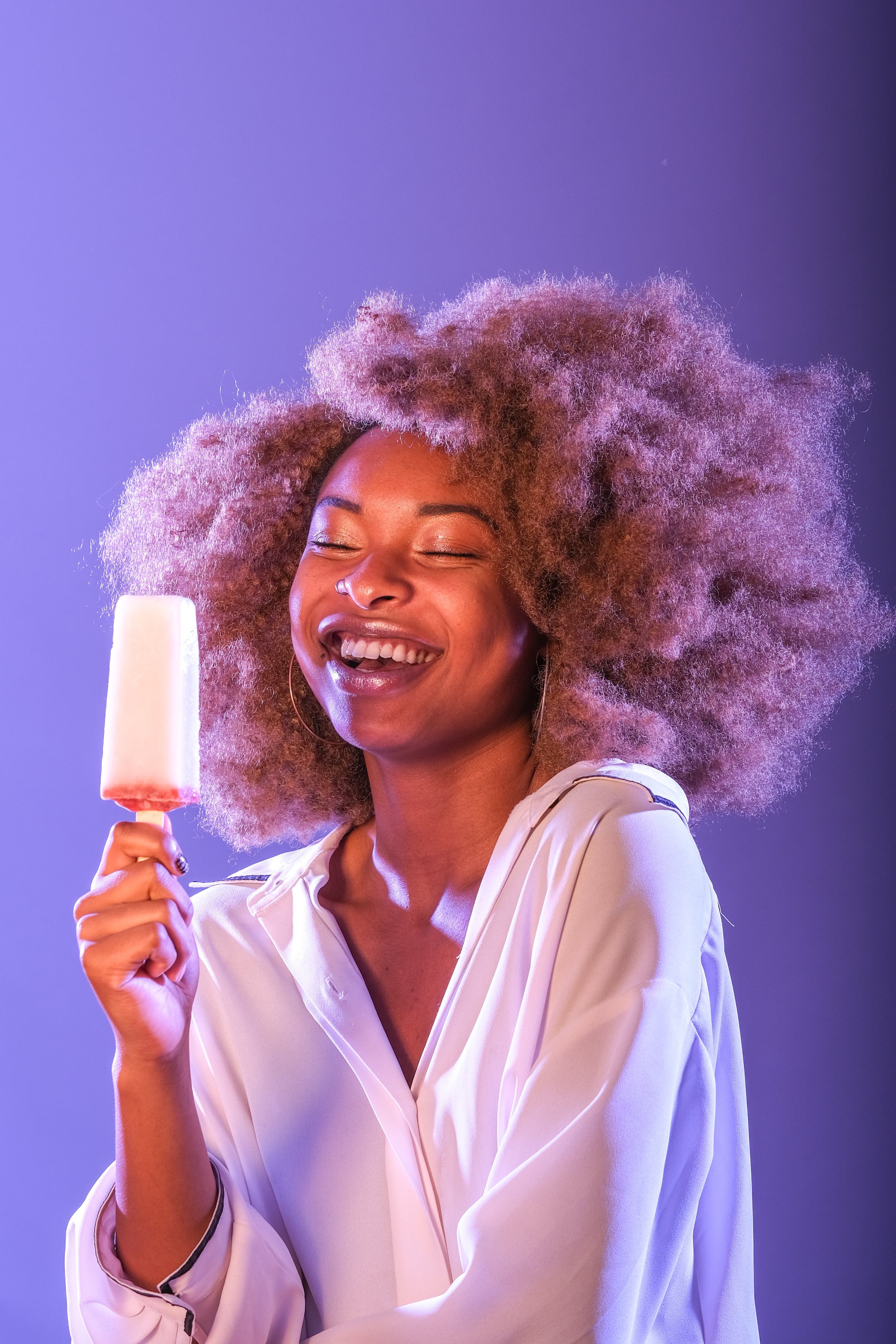


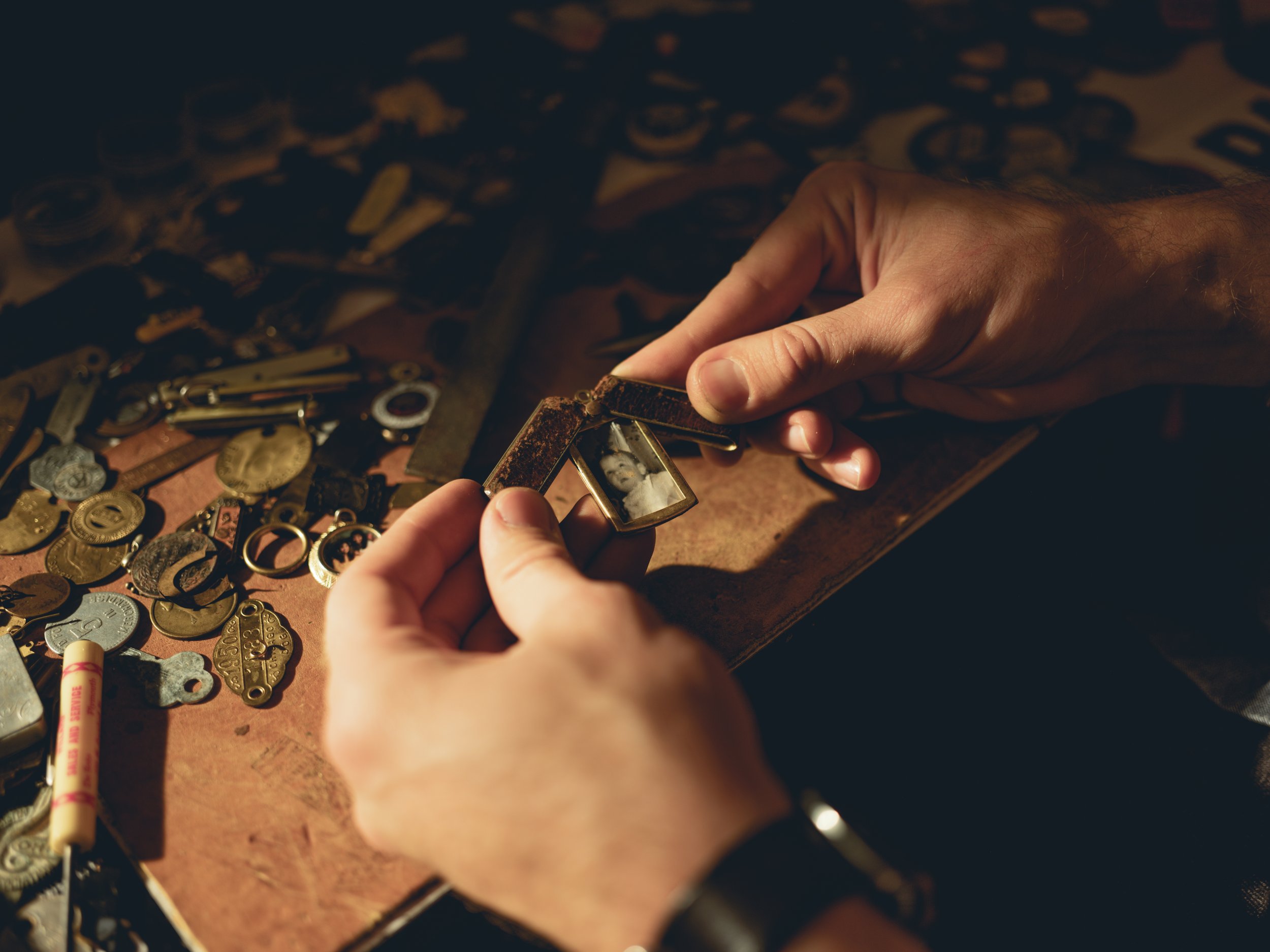
RUST BELT AMERICANA
I’ve always had an affinity to creators who get their hands dirty – the woodworkers, painters, metalworkers, the artisans who have the rough in their hands from really getting into a project that results in a tangible product that people can feel and touch. Nowadays we unfortunately are so accustomed to a digital world that we let the more artisanal aspects of creativity fall by the way side. I’m guilty of living in this digital world, so part of my approach is to seek out the artisans who I can observe and hopefully touch something tangible again.
Enter Sam Sloma from Rust Belt Americana – an artisan based in Chicago, but someone who describes himself as “digging through the garages, barns and basements of the dead” to create beautifully hand-blended, crude jewelry that speaks to vintage enthusiasts from all over the world. I wanted to capture Sloma’s process as true as I could, his approach to creating jewelry is more of a rescue, vs a recycle and a rejuvenate rather than a remix.
I spoke to Sam a handful of times, originally wanting to photograph him in my studio – call it fate or destiny, but we kept missing each other’s schedules, he’d be out, I’d be away, he’d be traveling, I’d be on a project and no matter how much we tried we couldn’t make our days align. We eventually just decided to book a dinner date and order in some wings, I packed my Siros 800 L kit, a few gels and made my way over to Sam’s little studio without really knowing what it looked like. Generally, especially if I’m shooting with lights I’ll over plan and pre-prep as much as I can so things are good to go once the talent arrives. This time around I borrowed from my approach to street photography, planned a little less in hopes that it would open up the opportunities to stumble upon something beautiful.
I walked into Sam’s apartment, it was littered with beautiful character – nothing was new, everything had character and one could easily assume that each amazing item in his apartment had an equally amazing story attached to it. I made my way to the back of his apartment where I found Sam’s studio. Sam’s process starts with trawling the backyards of cities and graveyards of the past, but then settles and comes to life in a small studio, quite humble and full of nostalgia. I wanted to stay true to the space, the raw and dense details of all his rescued pieces really spoke to his process. There were small details that instantly stood out to me that made you know that it was Sam’s space, he had old photos on his wall and various shapes scattered around his desk. After looking around for a few seconds, I ended up deciding to set up a single light, with a feint orange gel. I placed this light outside looking into the only window in his space, hoping that it would create a beautiful glow that I could use to capture the action but also complement the light coming from his Rust Belt Americana neon sign in his room.
I fired off some test shots, raised the position of the light a little and then moved over some of the details in his studio – the result was great, the white walls of the room bounced the light beautifully into the shadows and allowed me to stay true to the ambience, mood and contrast of this small, confined space. I started by shooting photos of Sam through the door to his space, when I’m shooting more of a docu-style shoot I always try to start wider with an establishing shot, then move in closer as I feel more comfortable with the space. I push in and focused on the details and captured his process, I offered him little to no direction and just letting him do his thing while I crafted my photographs.
After Sam sanded down a few trinkets, drilled through a few coins and added finishing details to a handful of necklaces, I asked him to swing around on his chair and pose for a few portraits. I captured him on his humble little stool, in the center of his studio, amidst the nostalgia and I realized that Sam’s craft is not just beautiful, but also a small snippet from the past that I could capture and take home with me.


